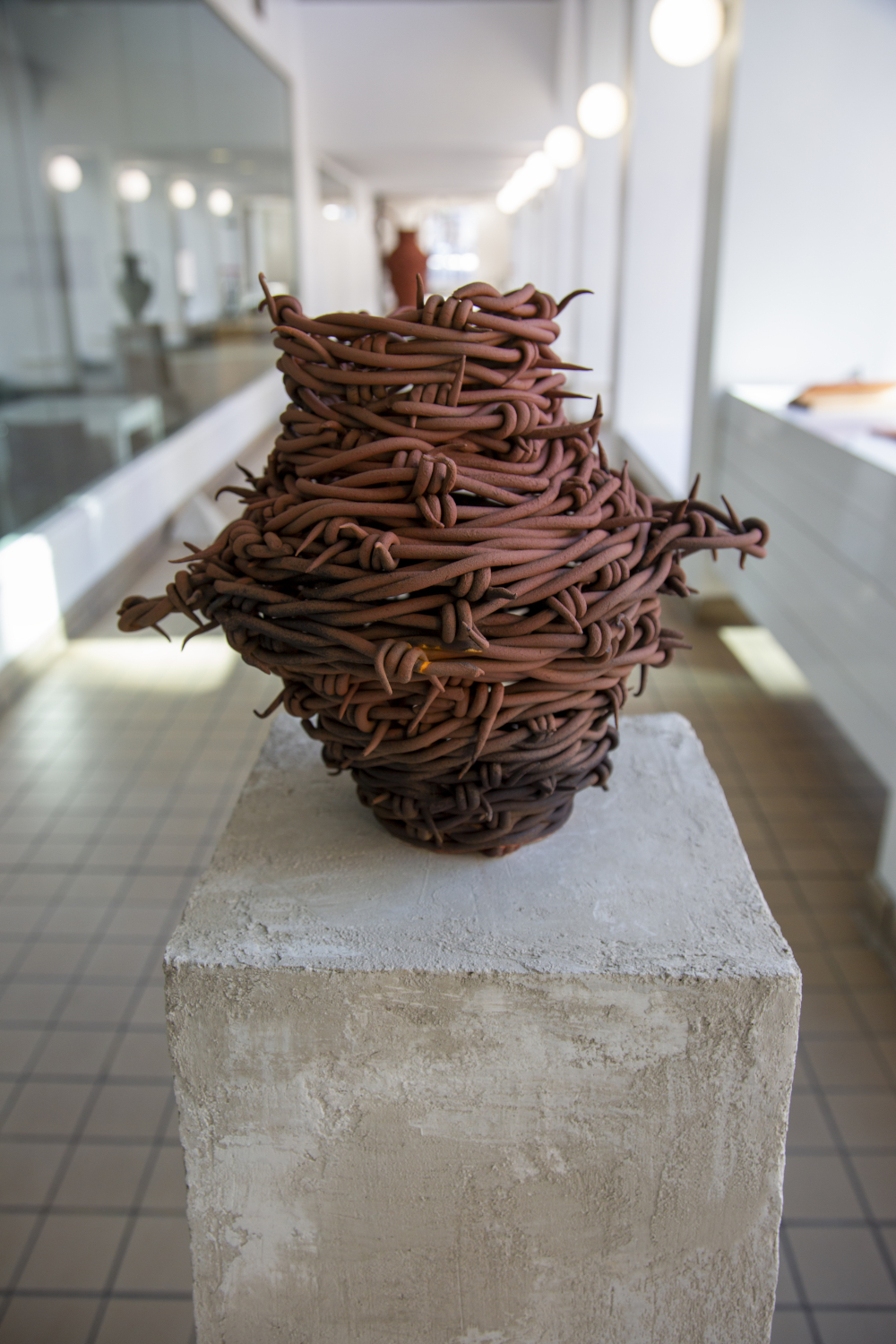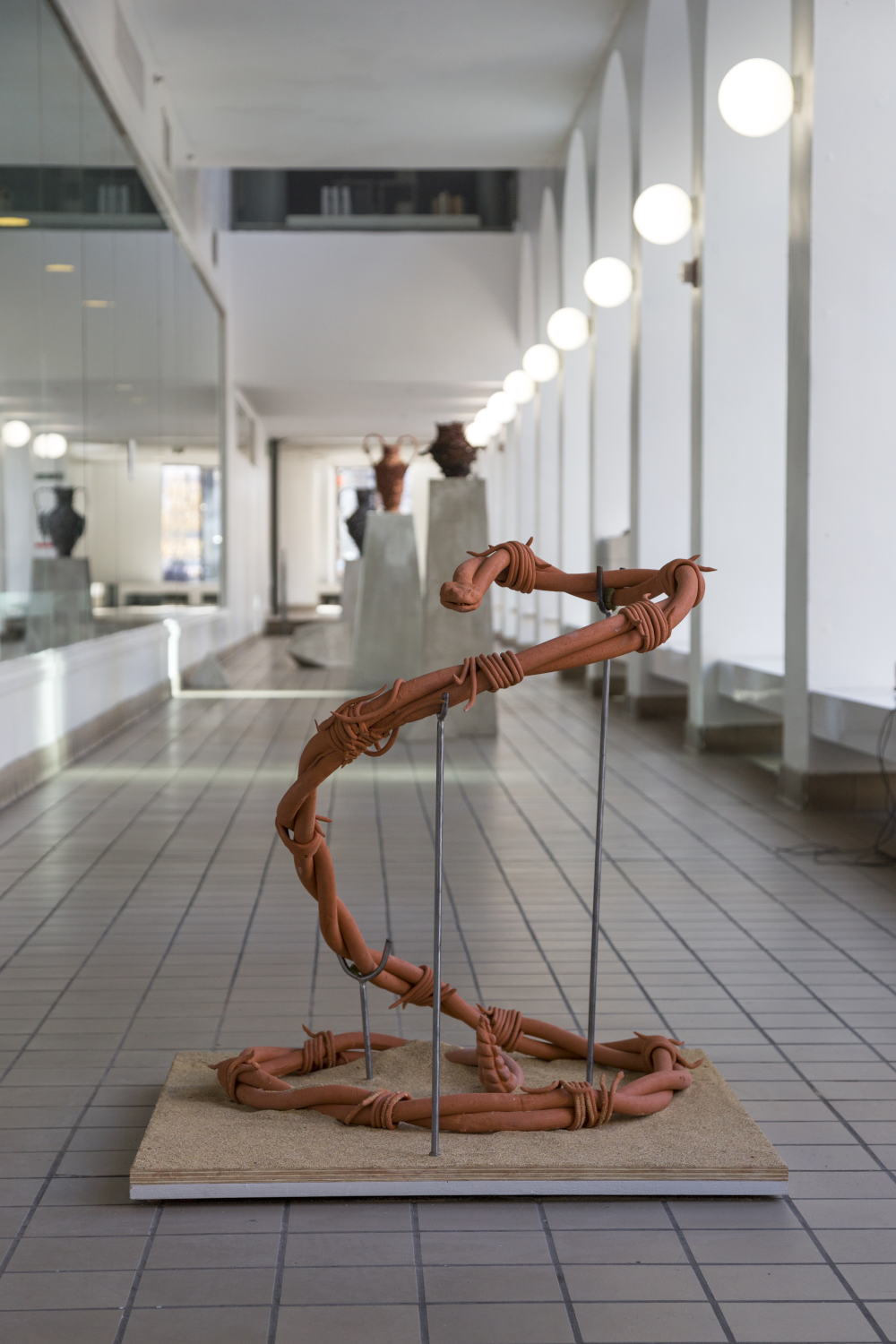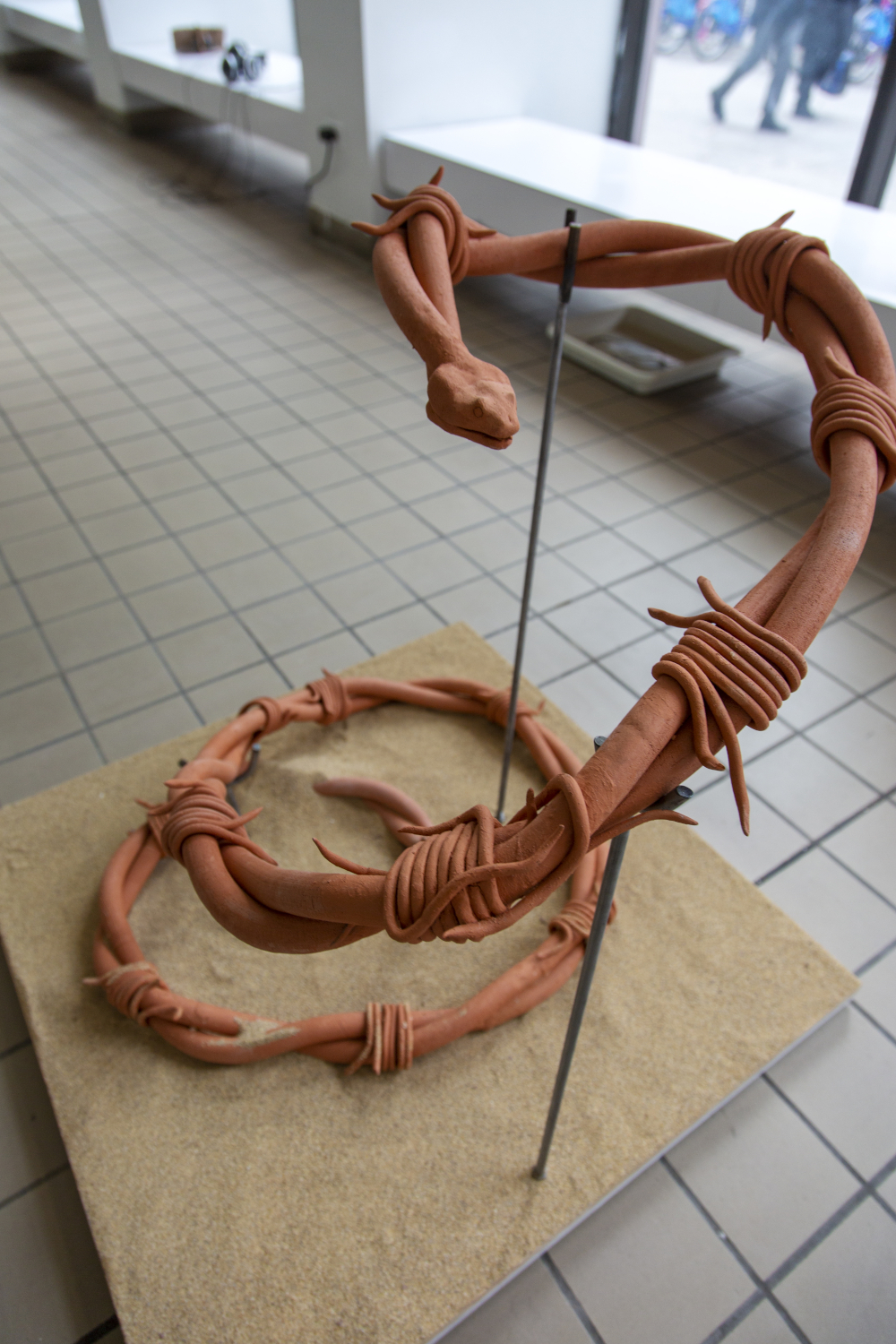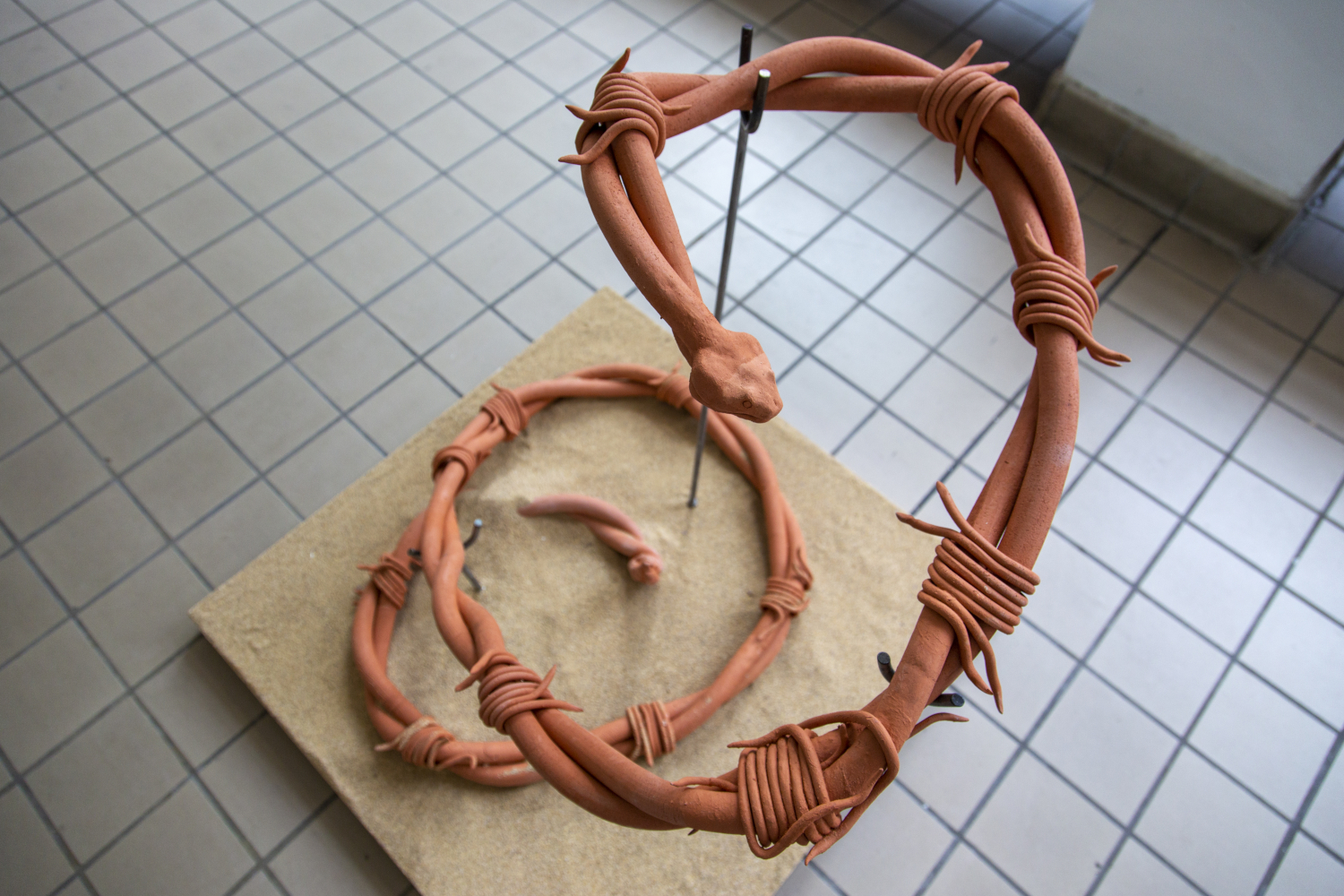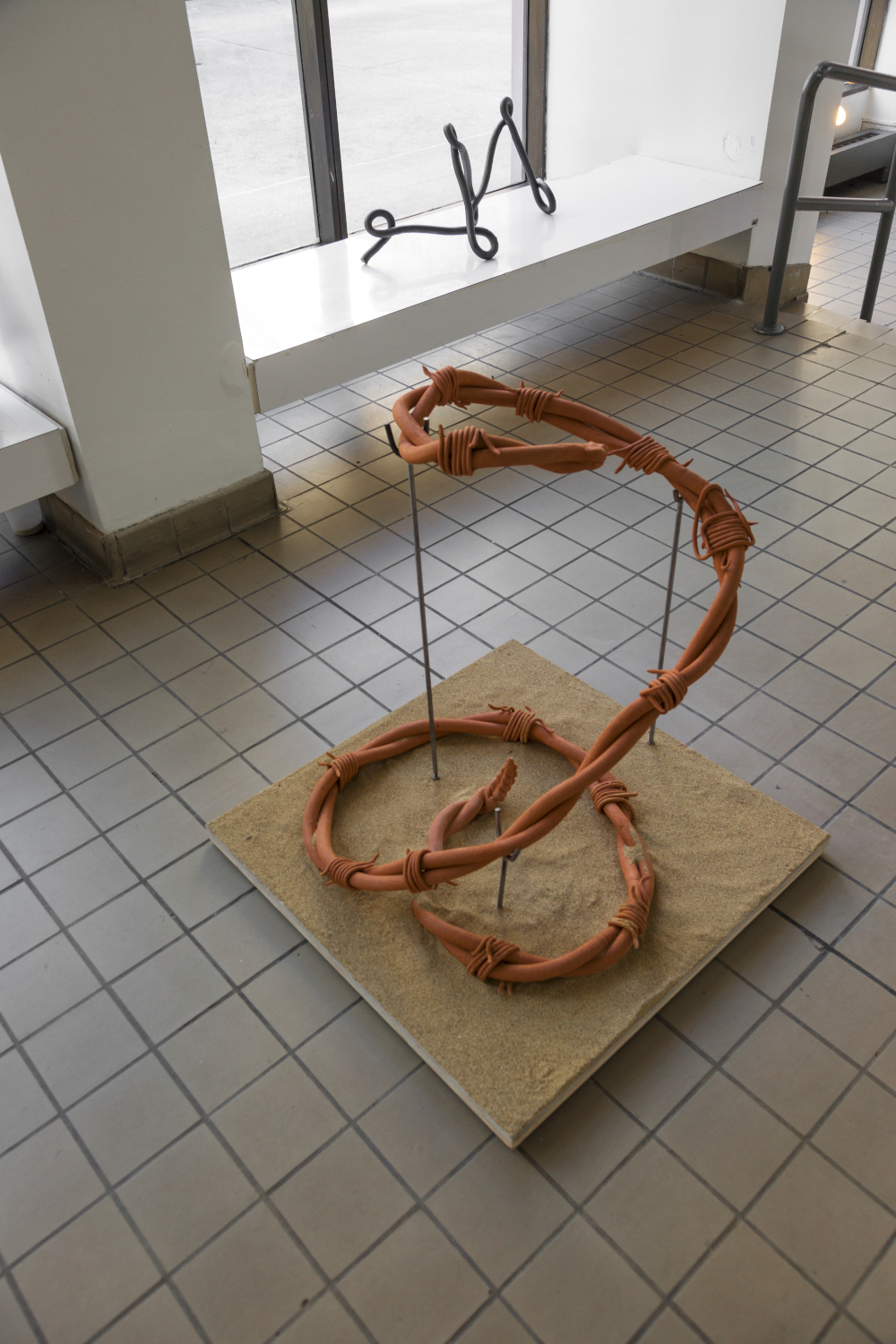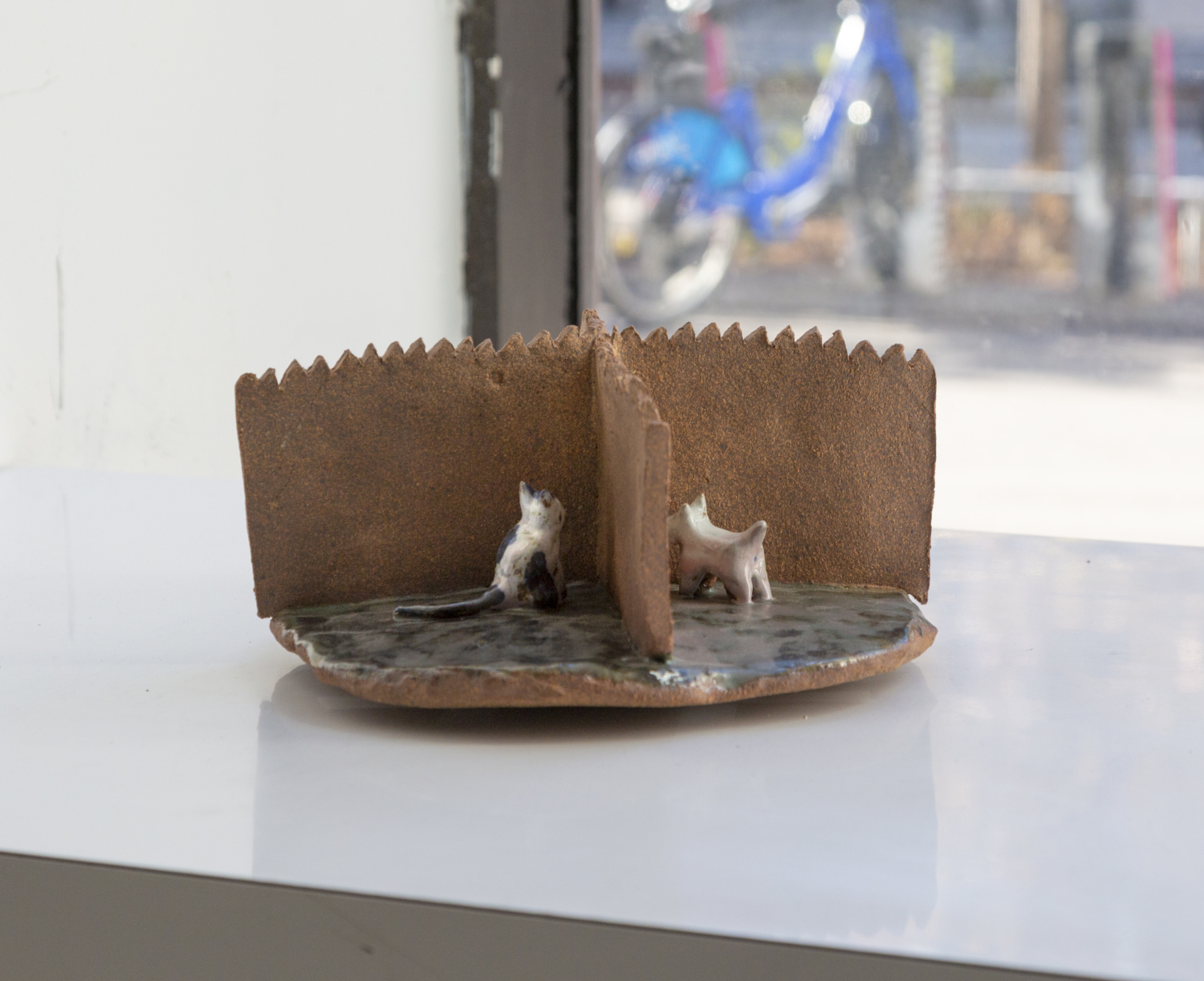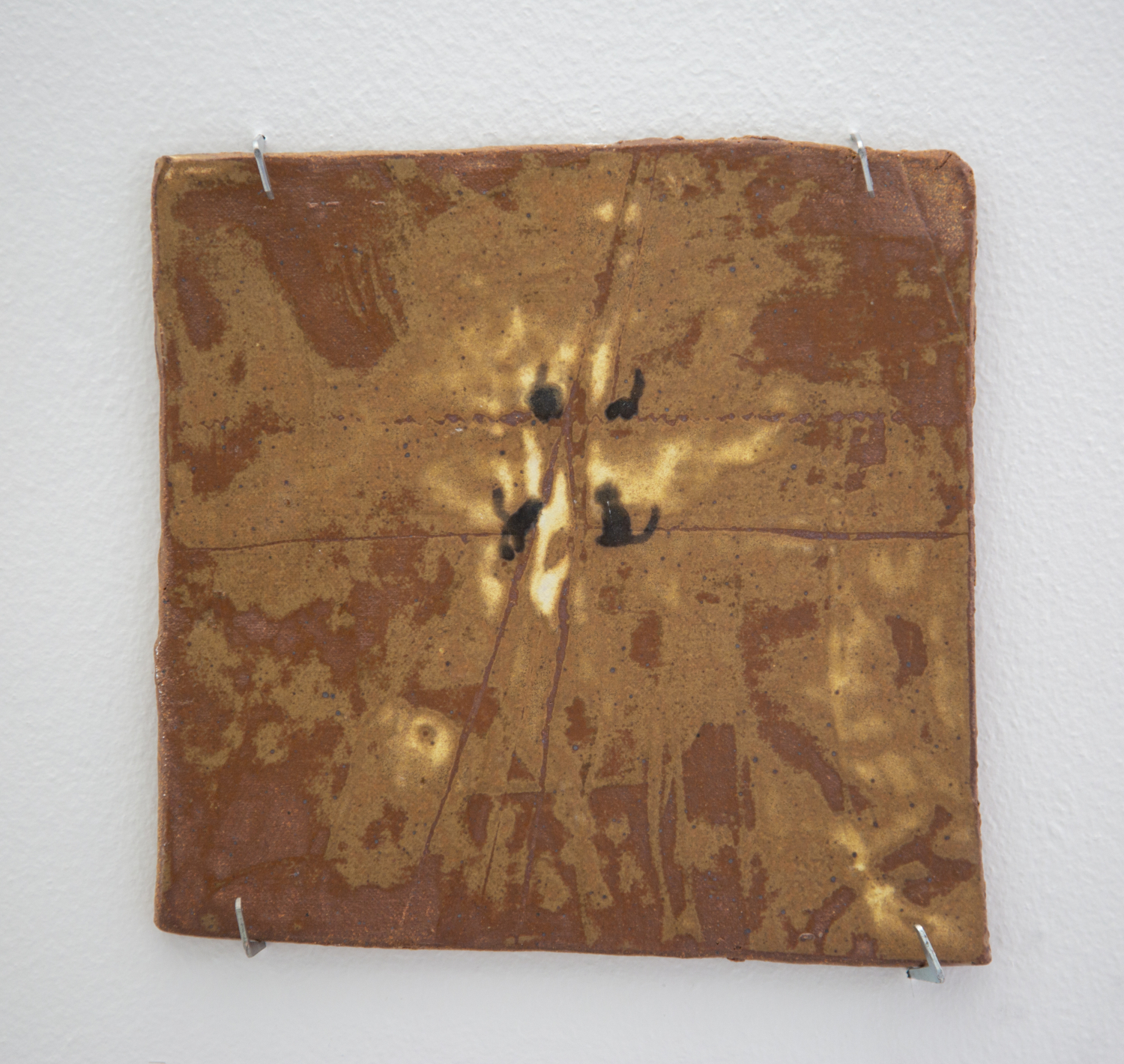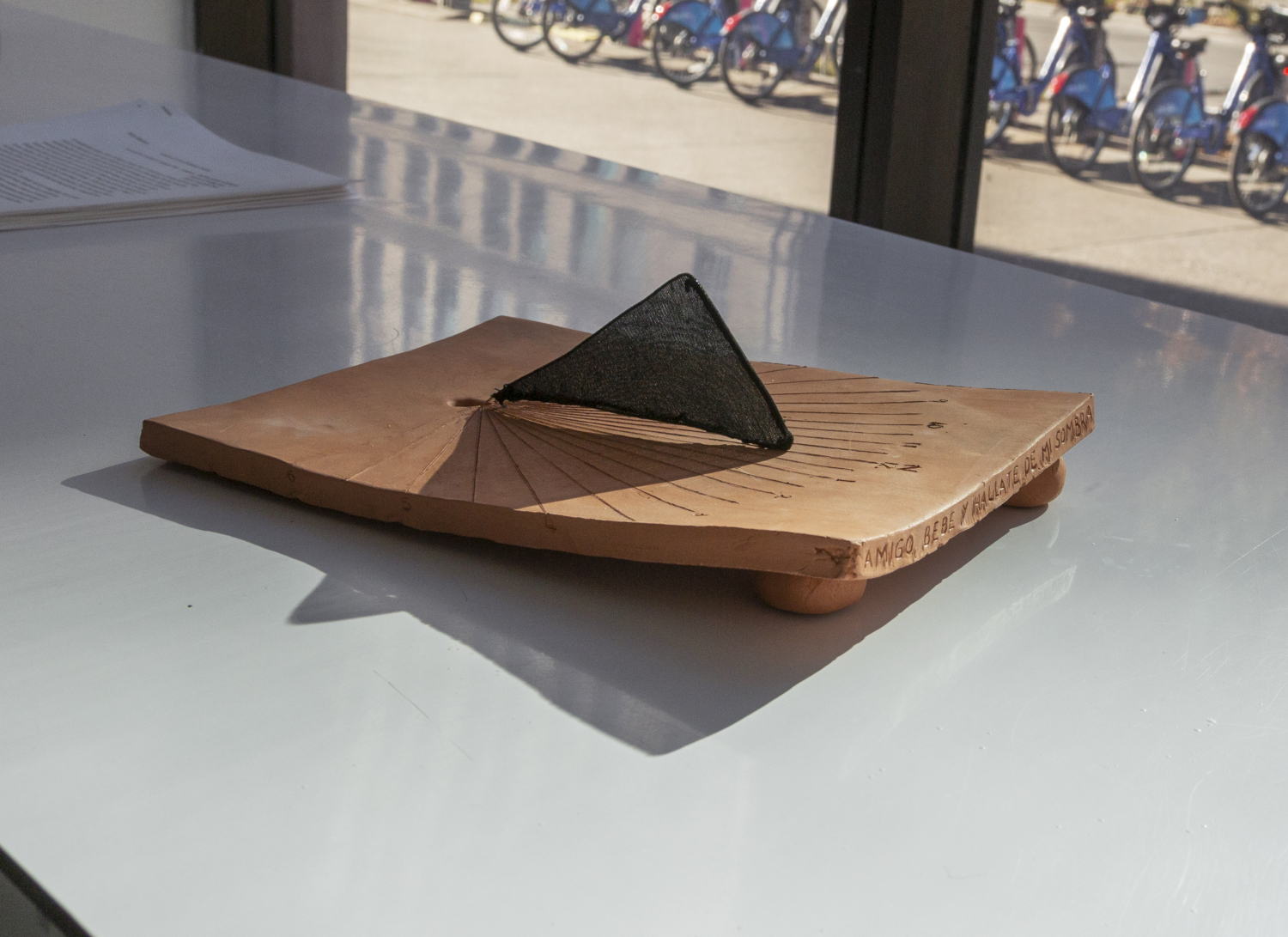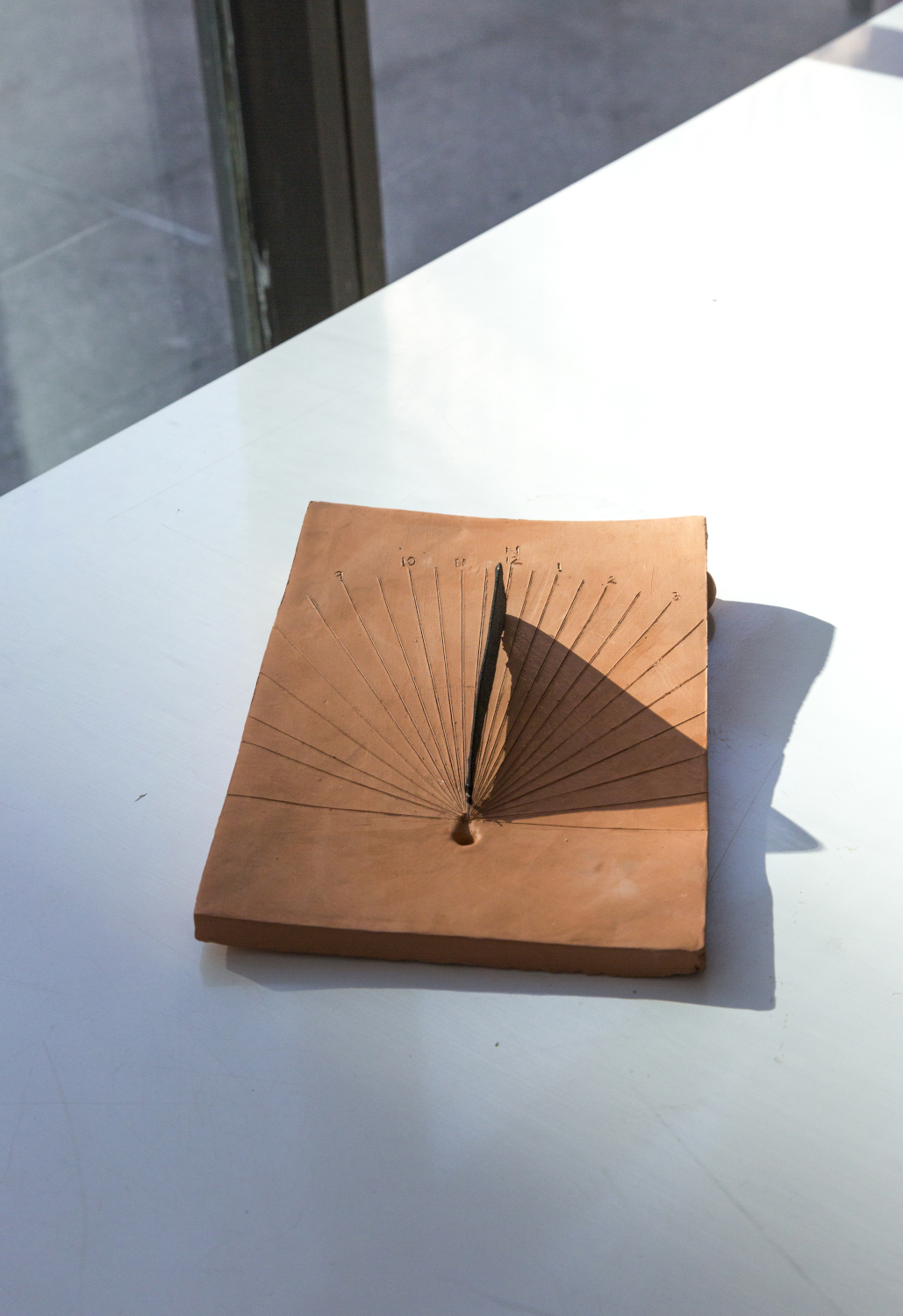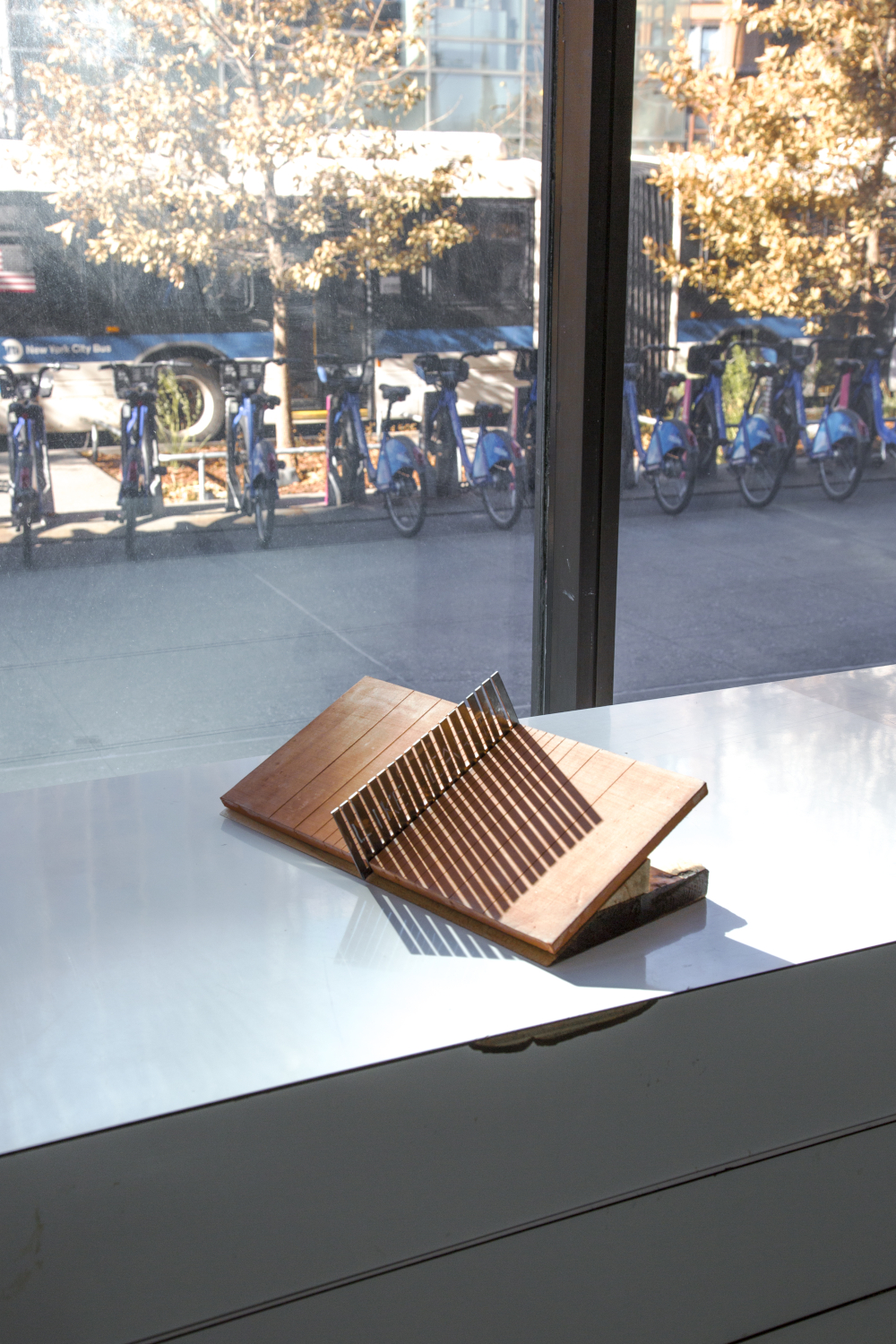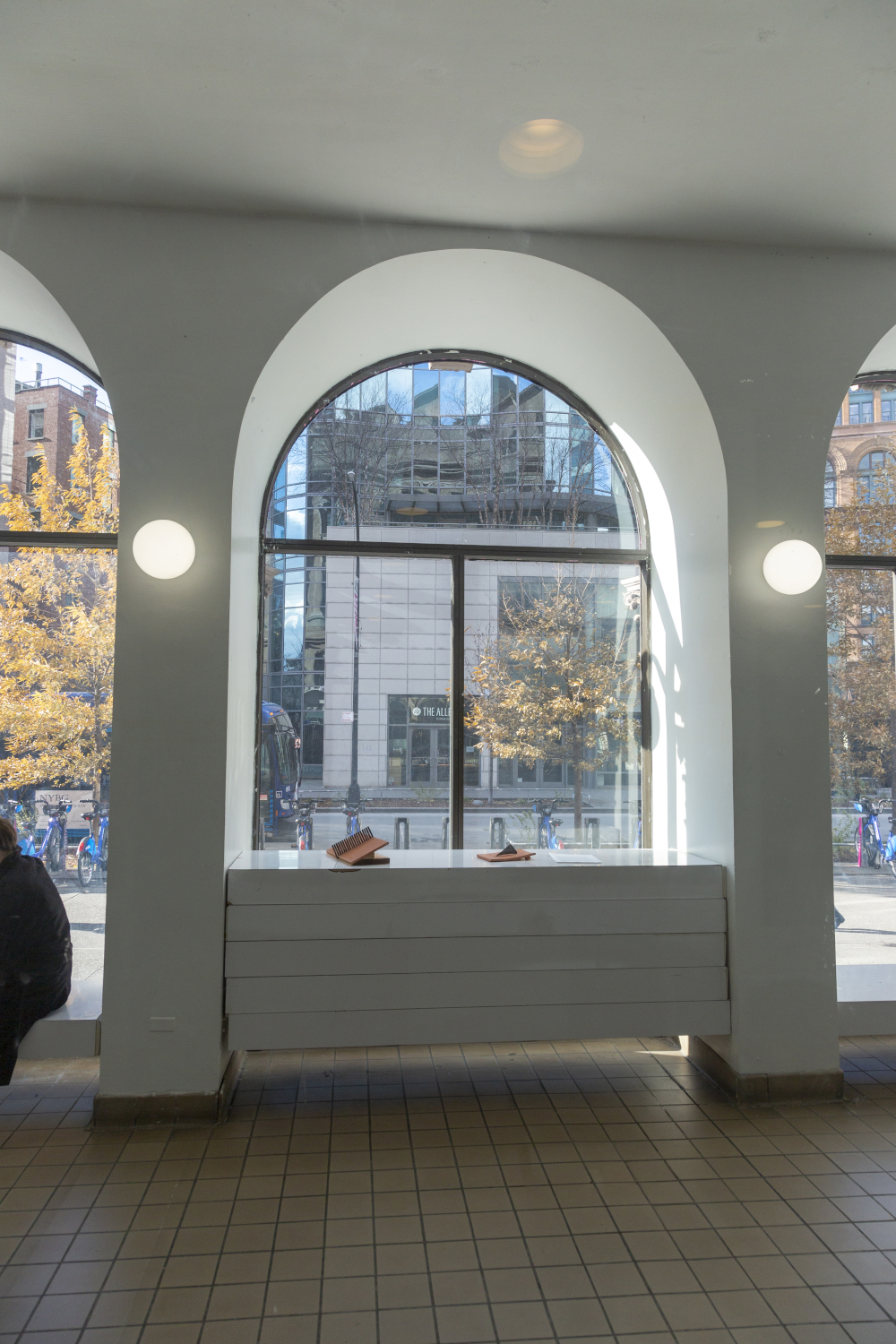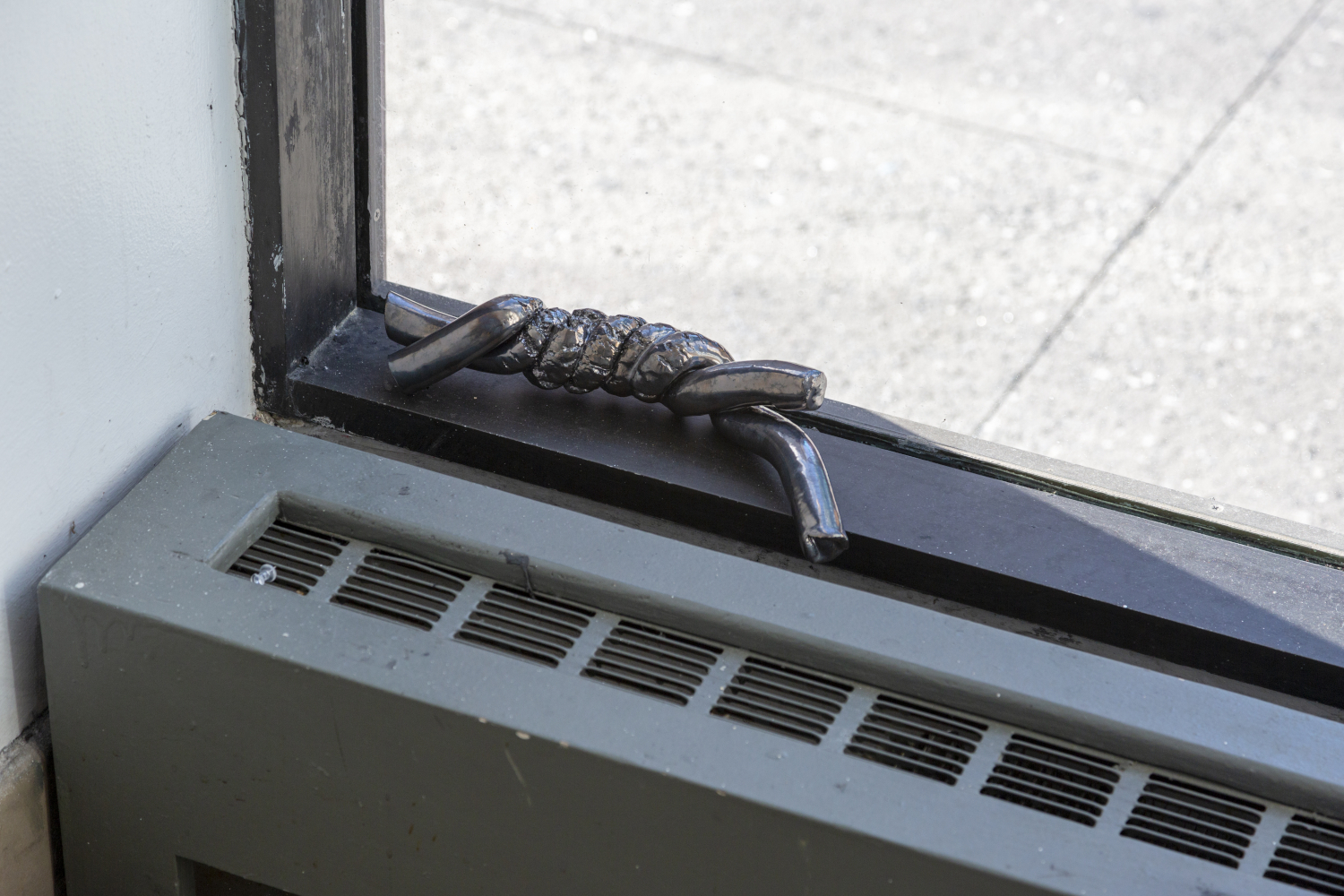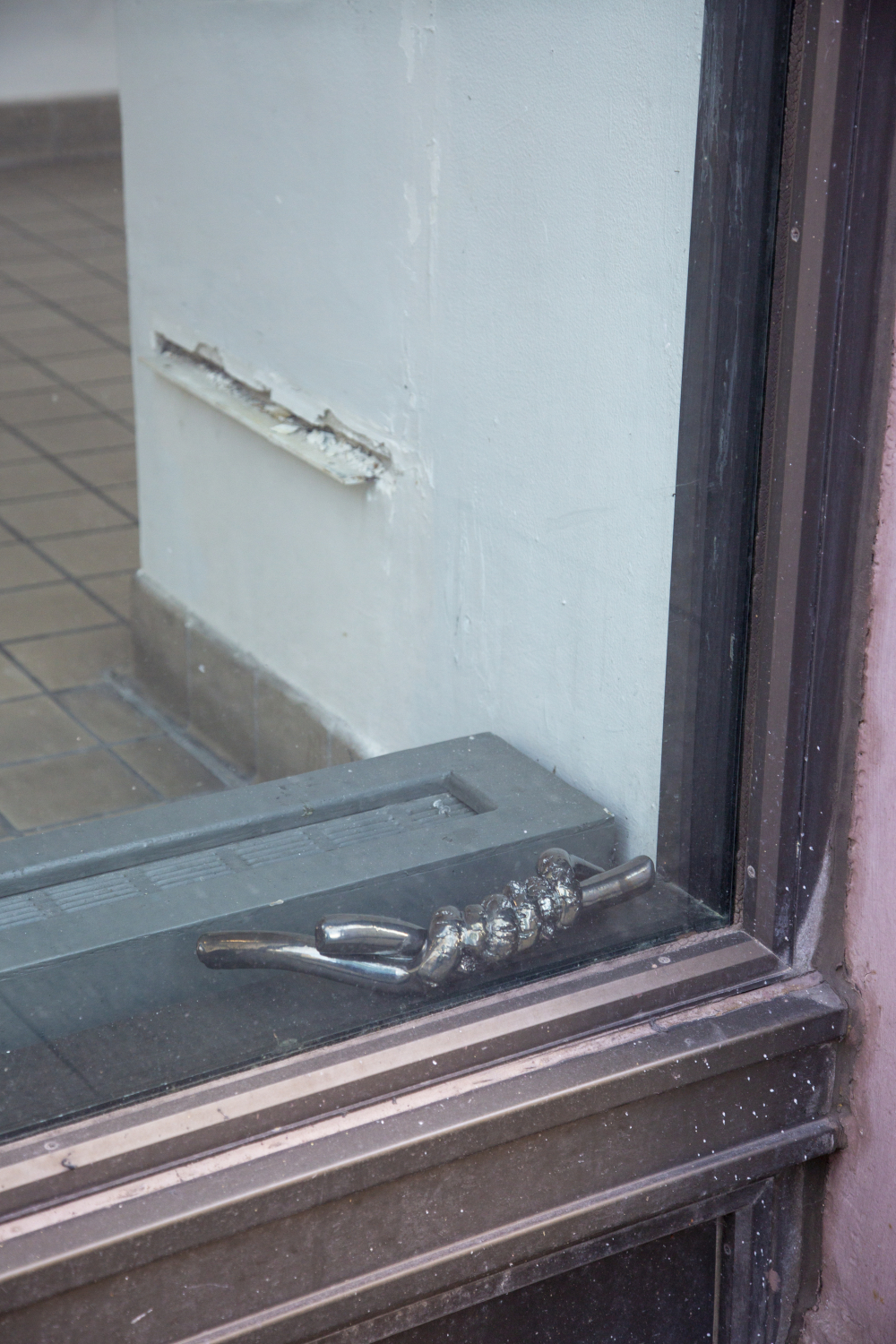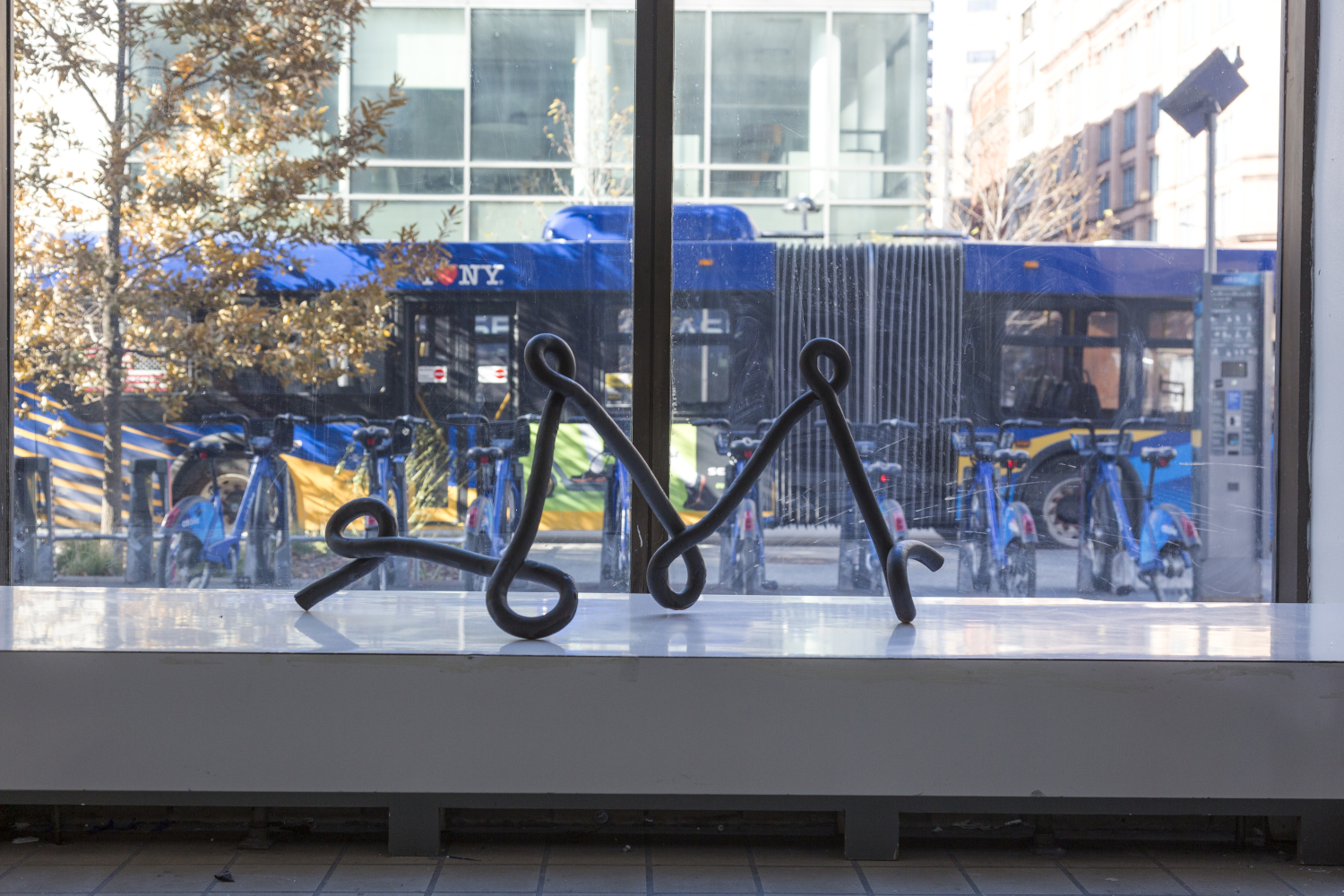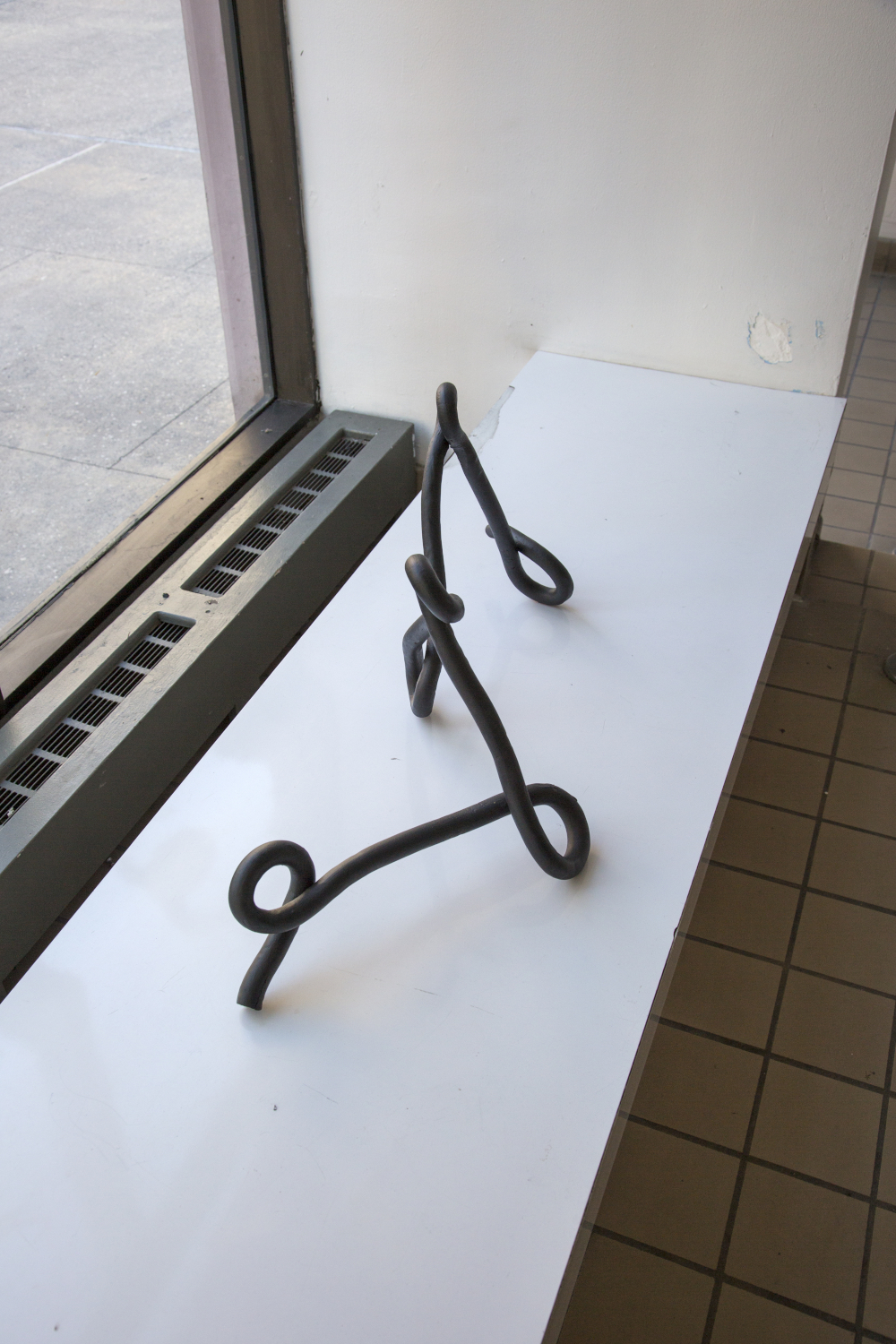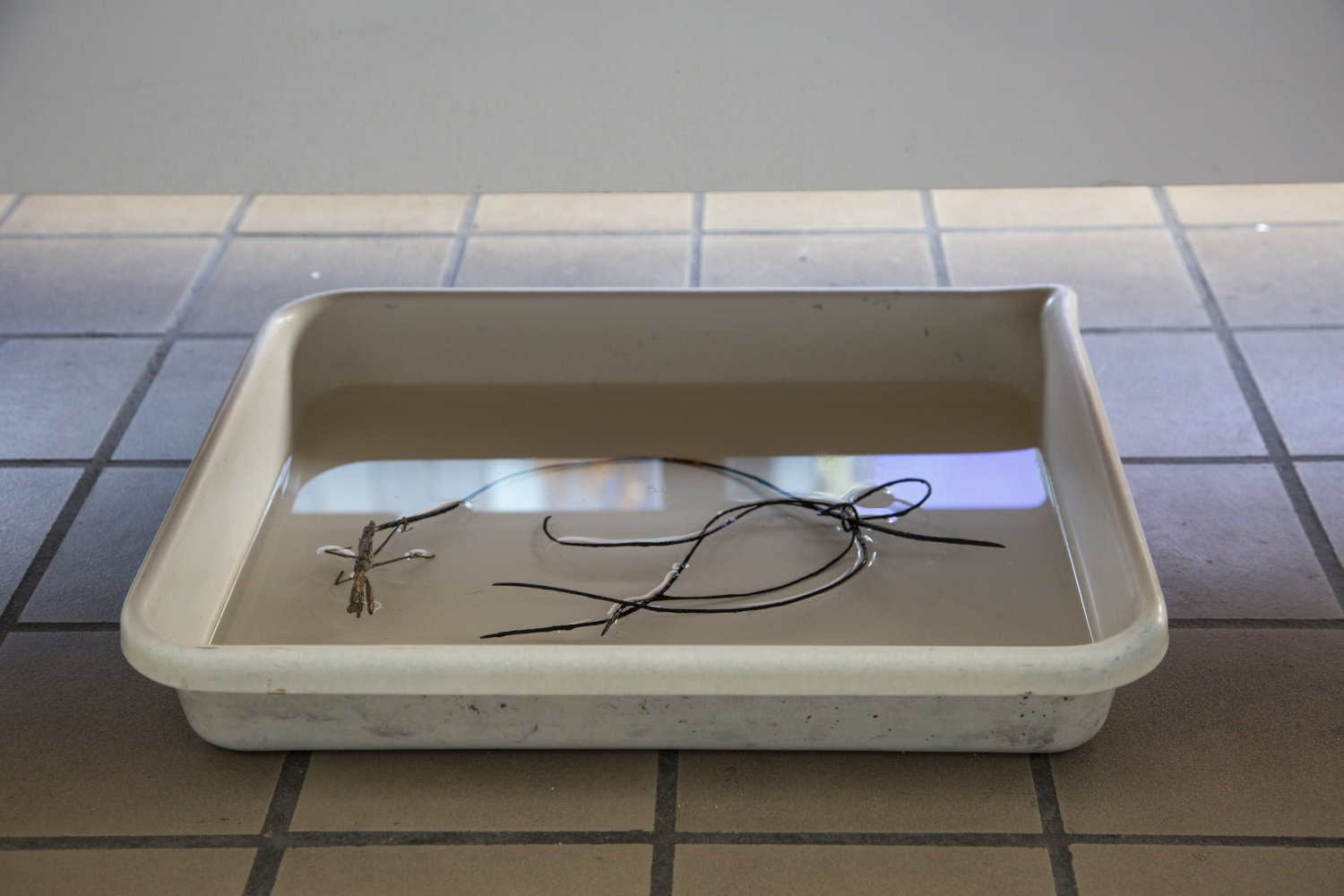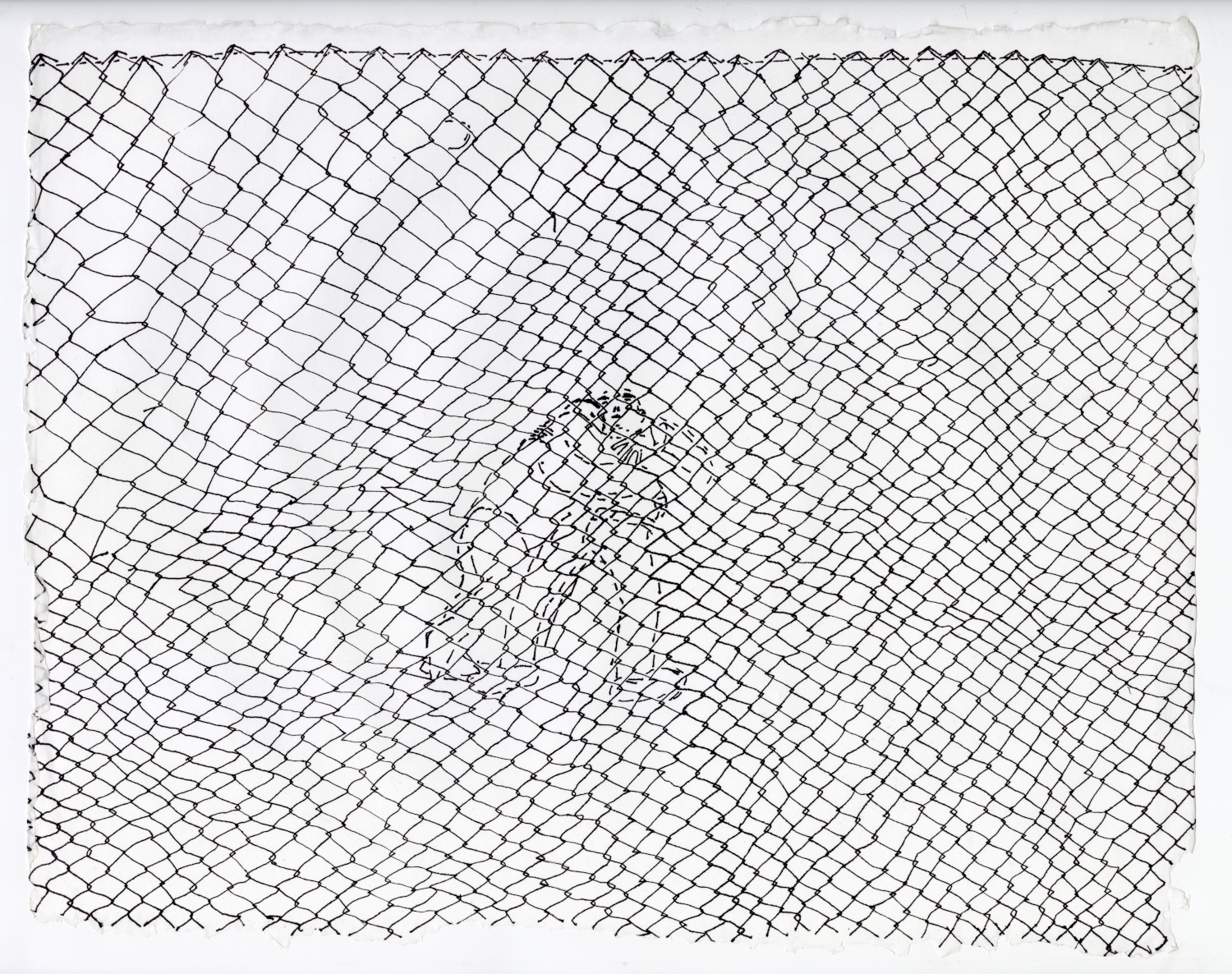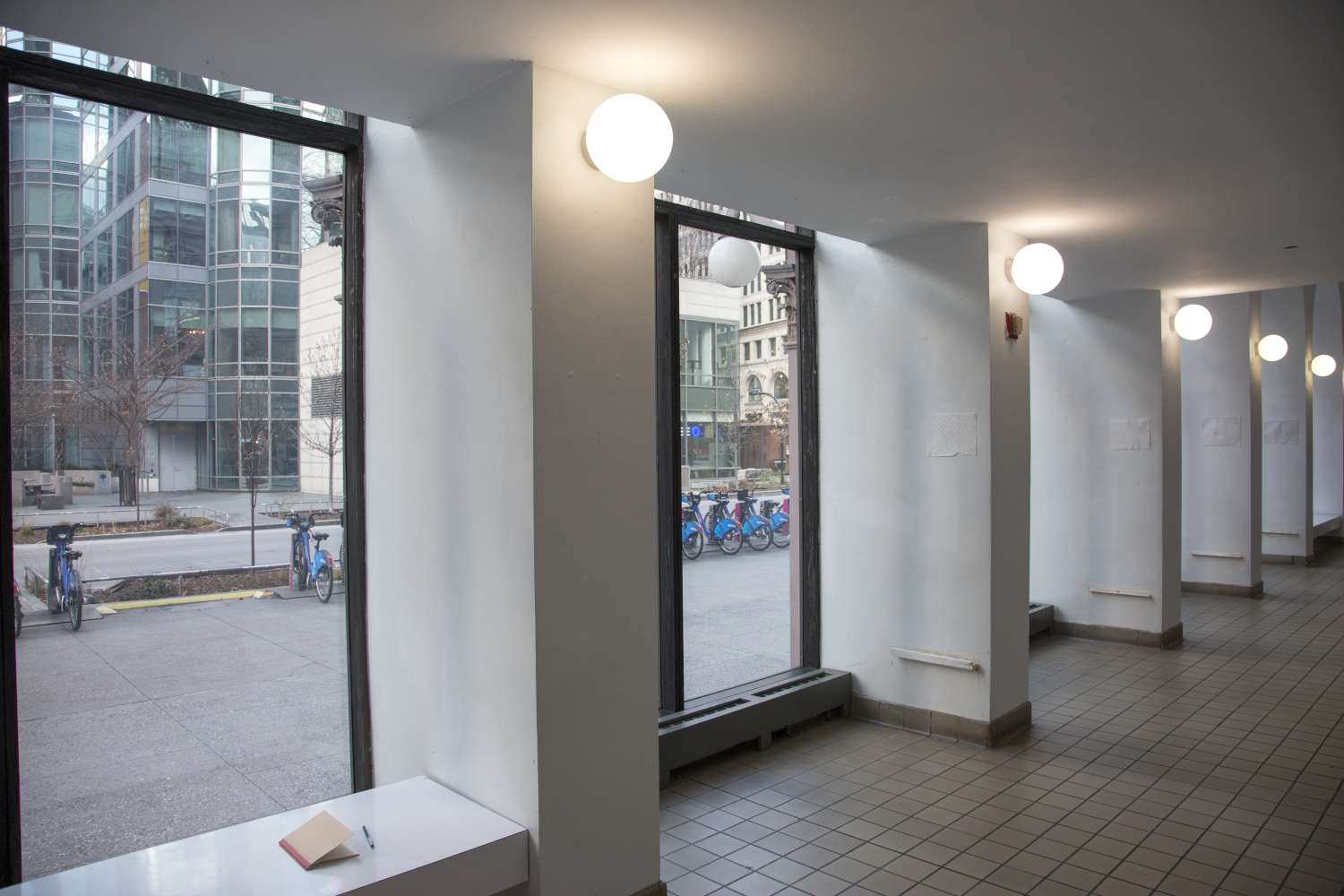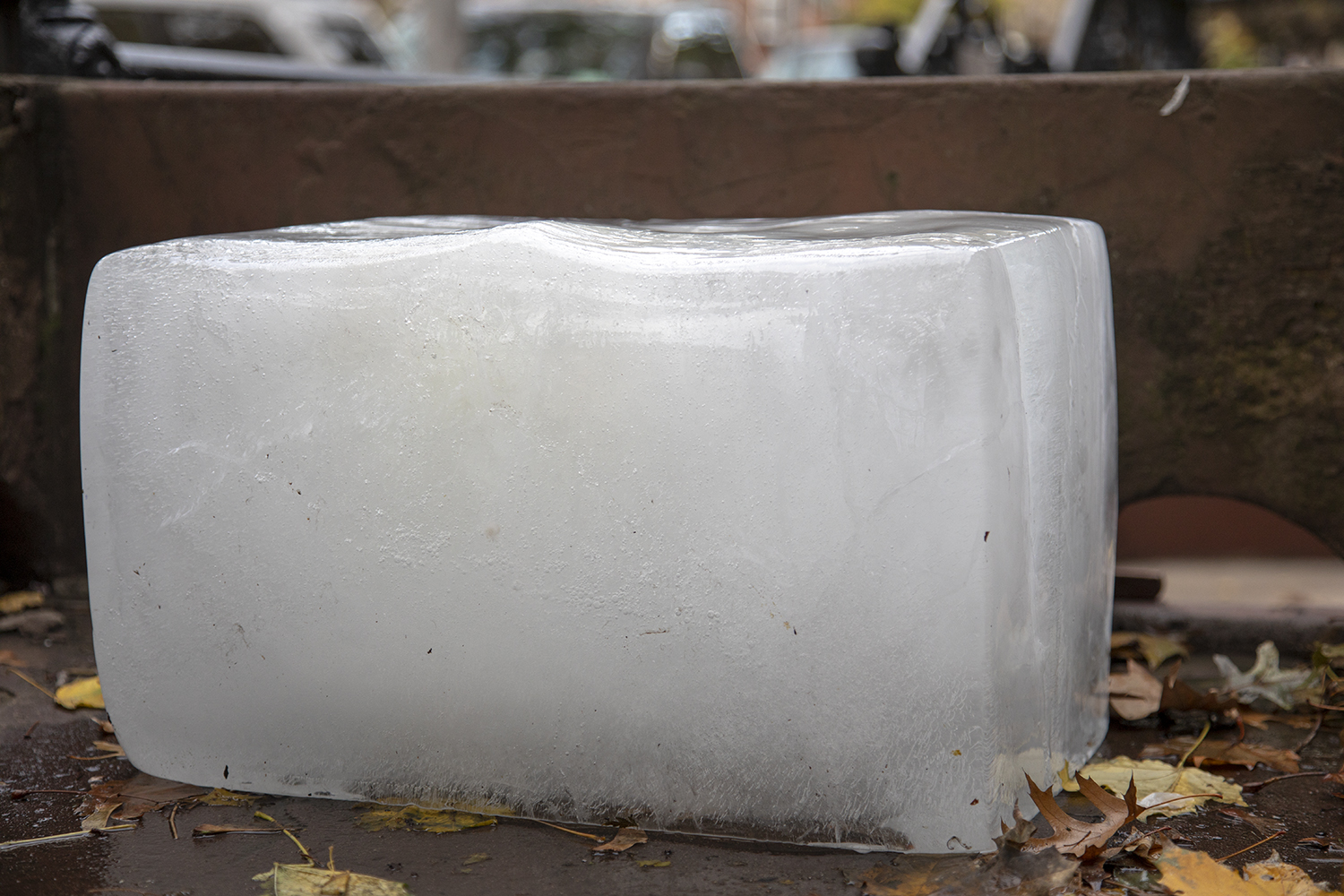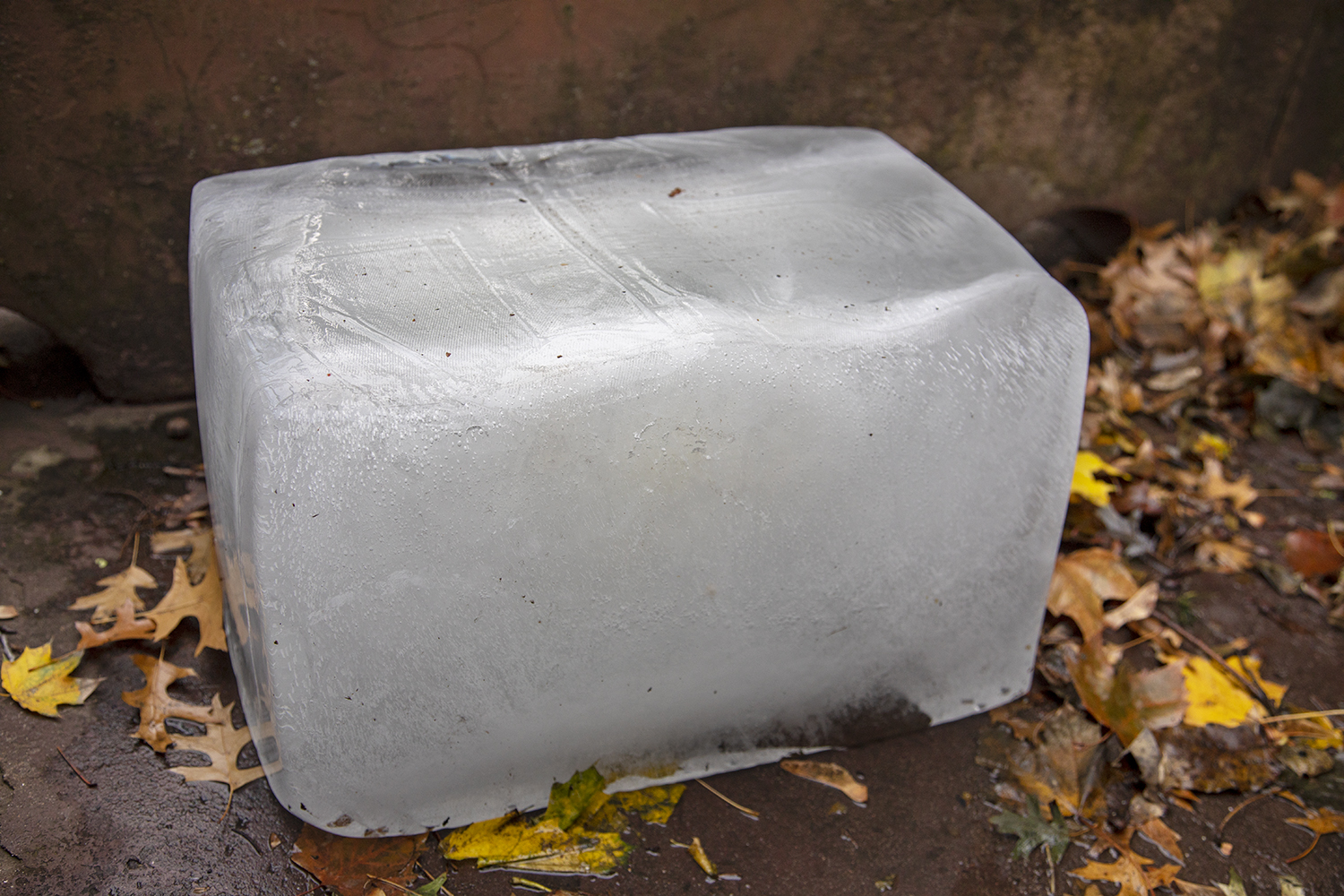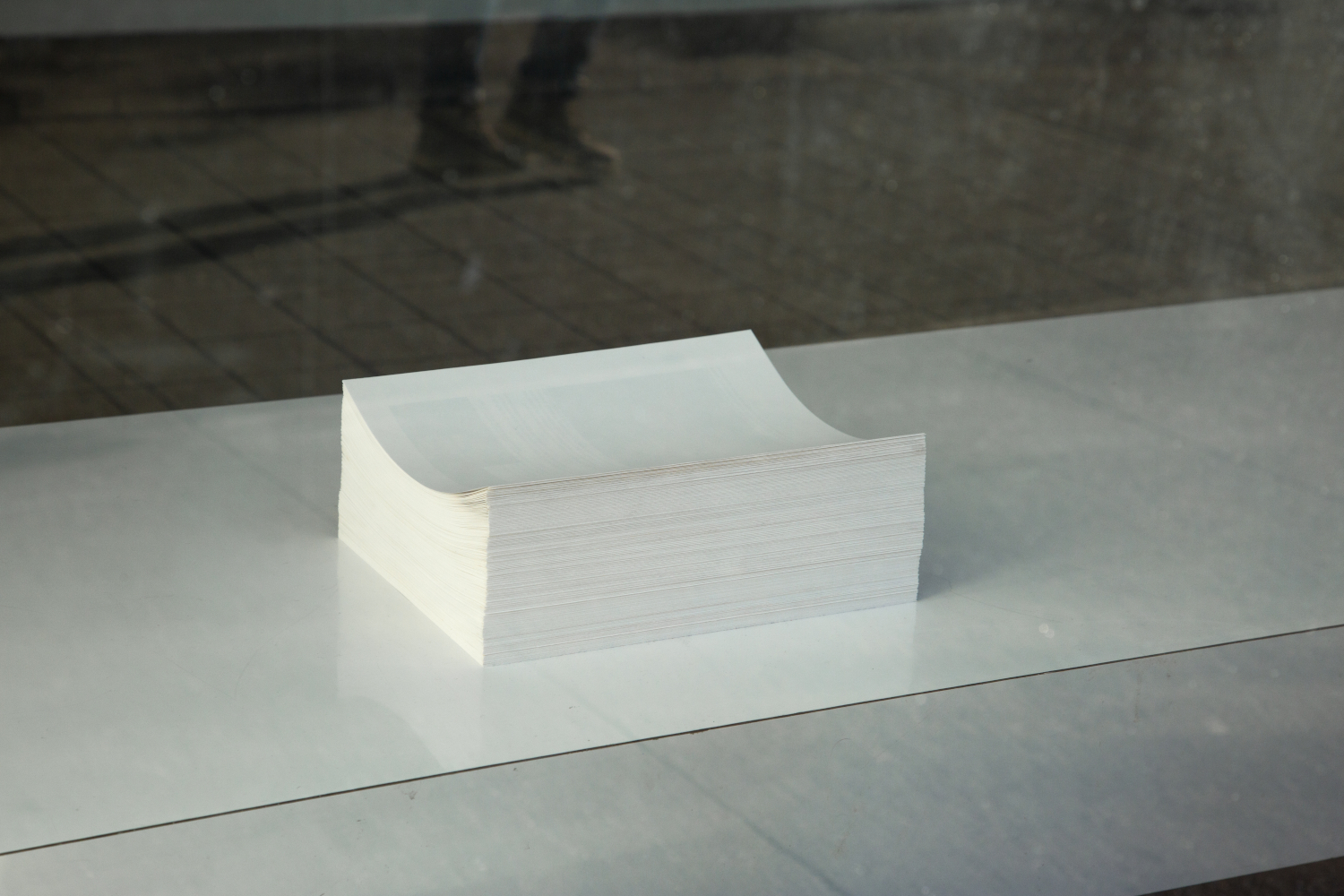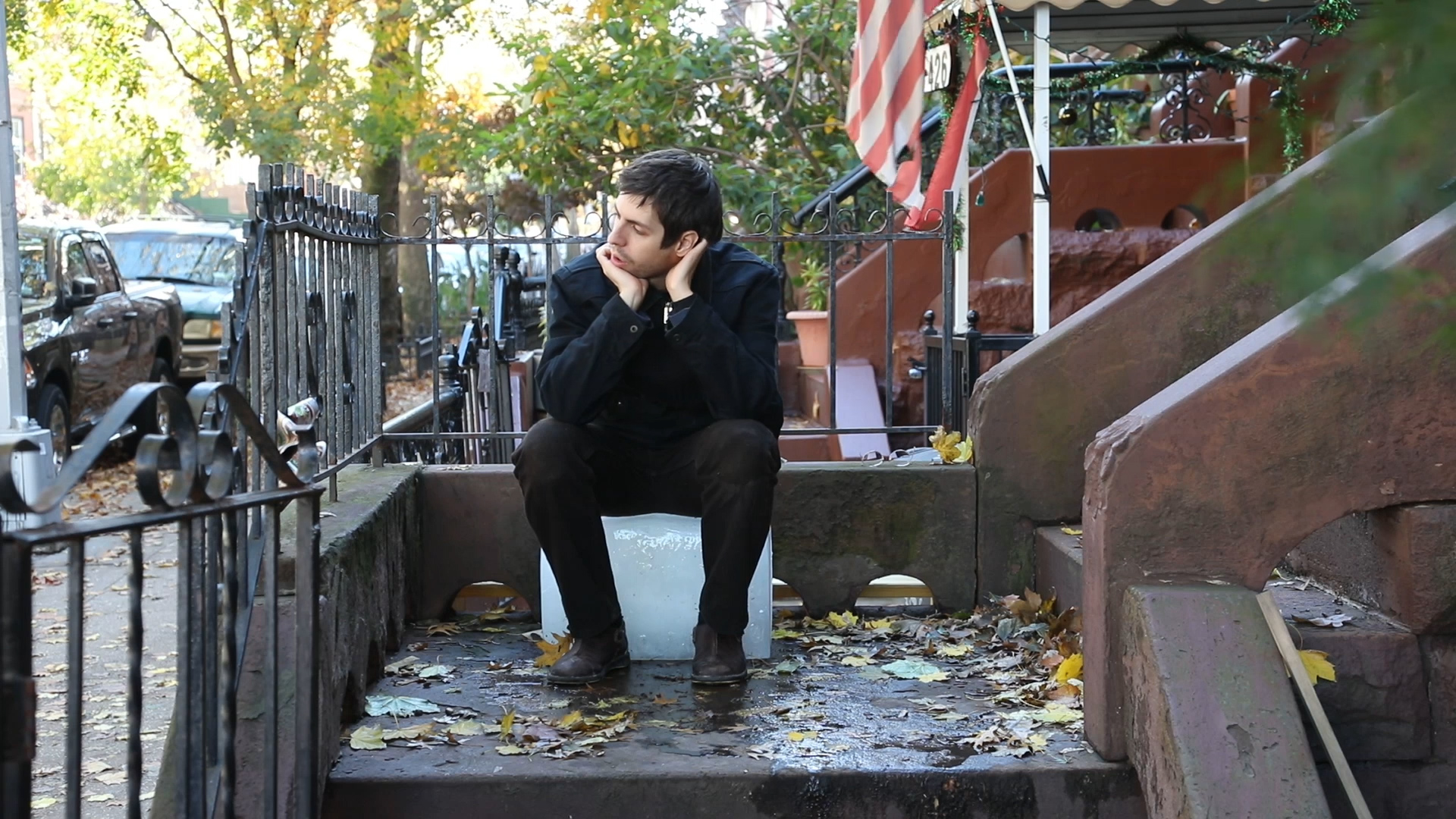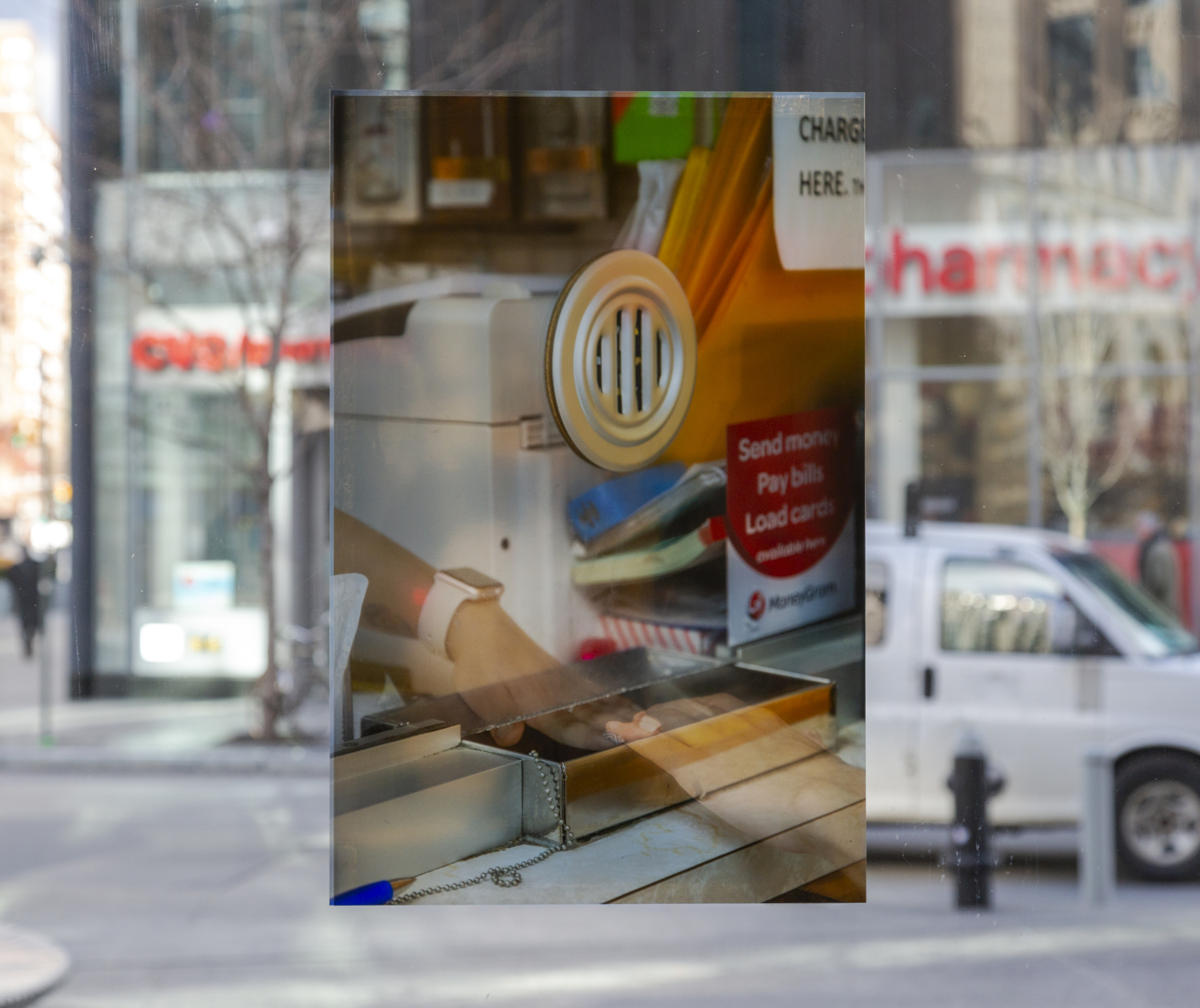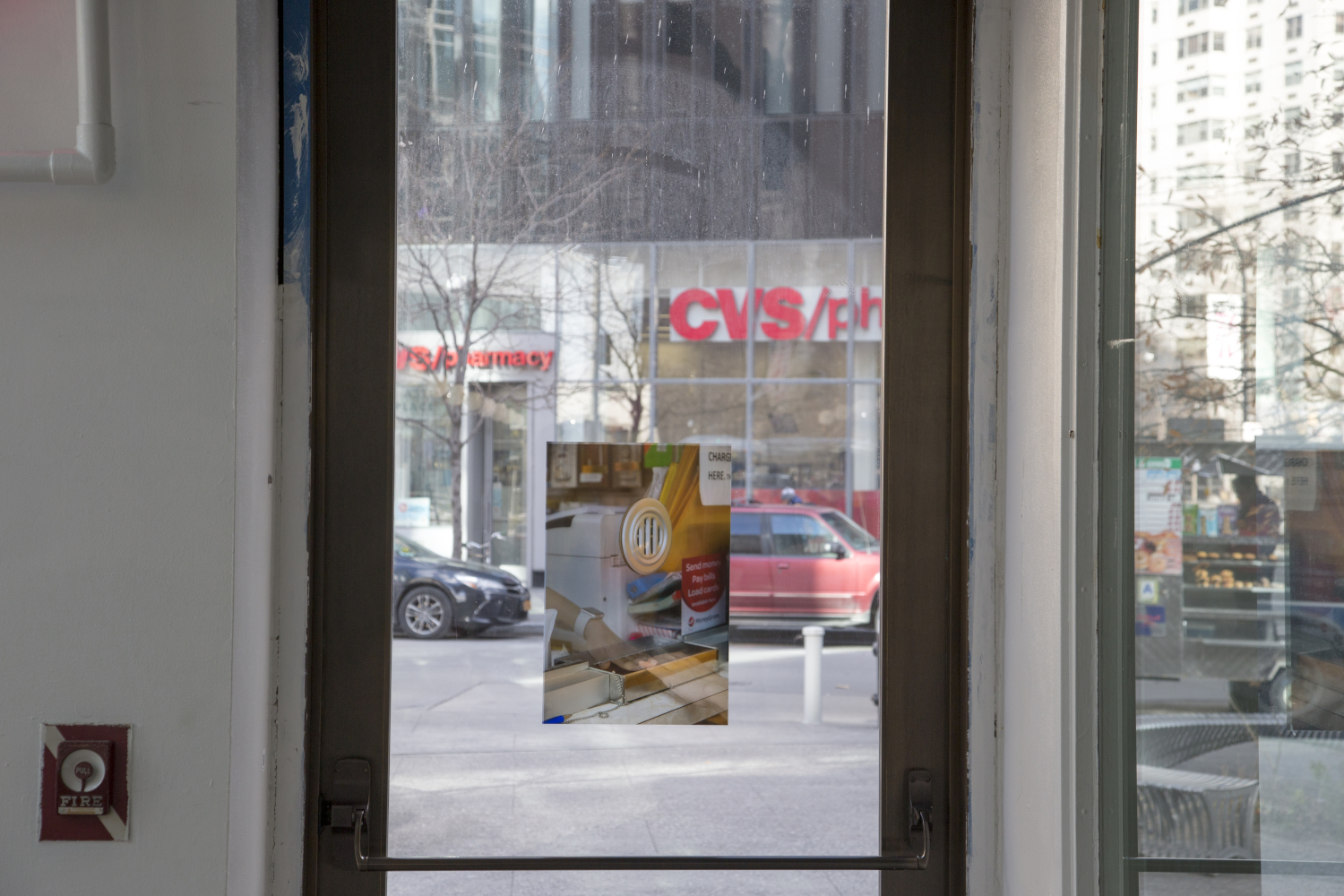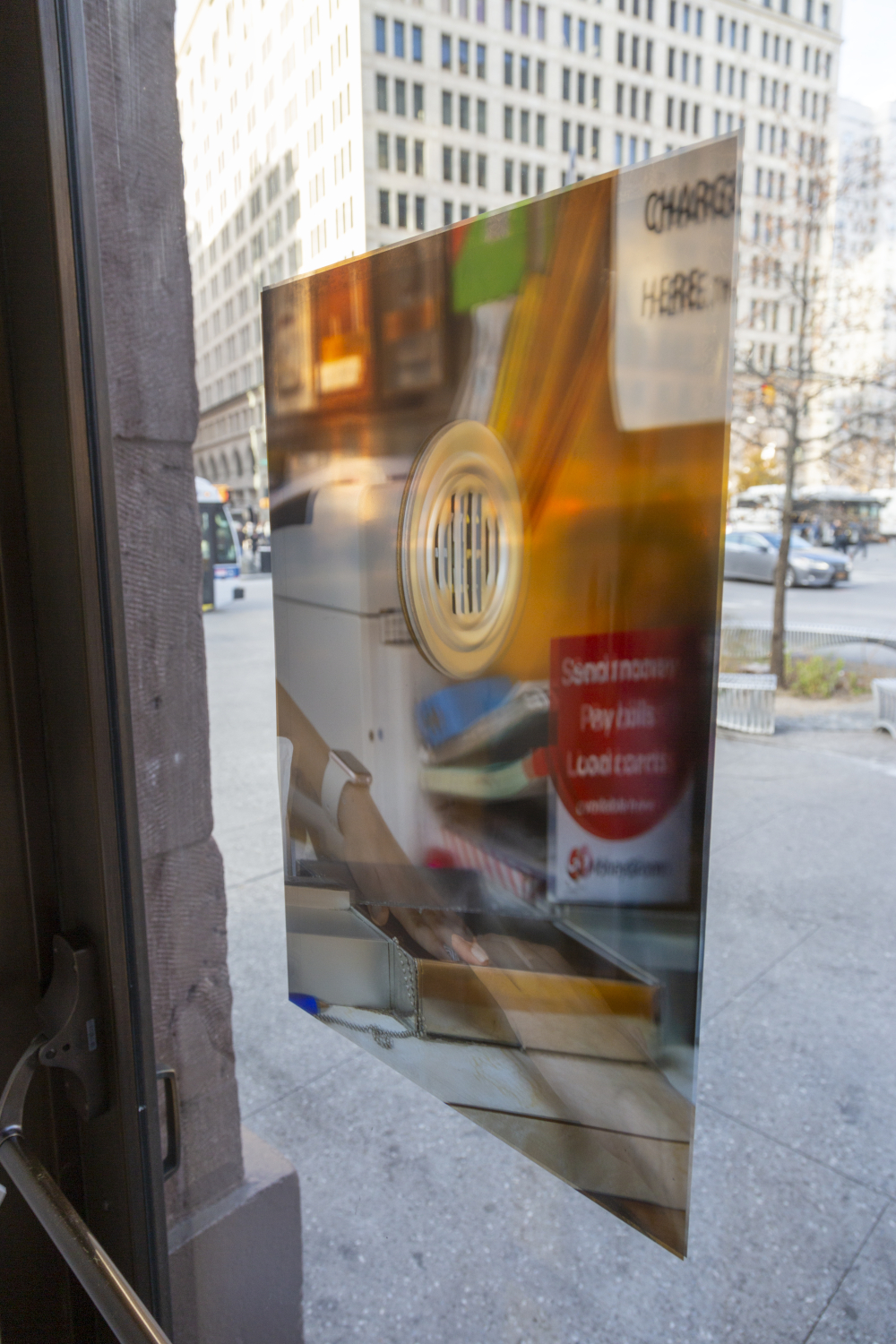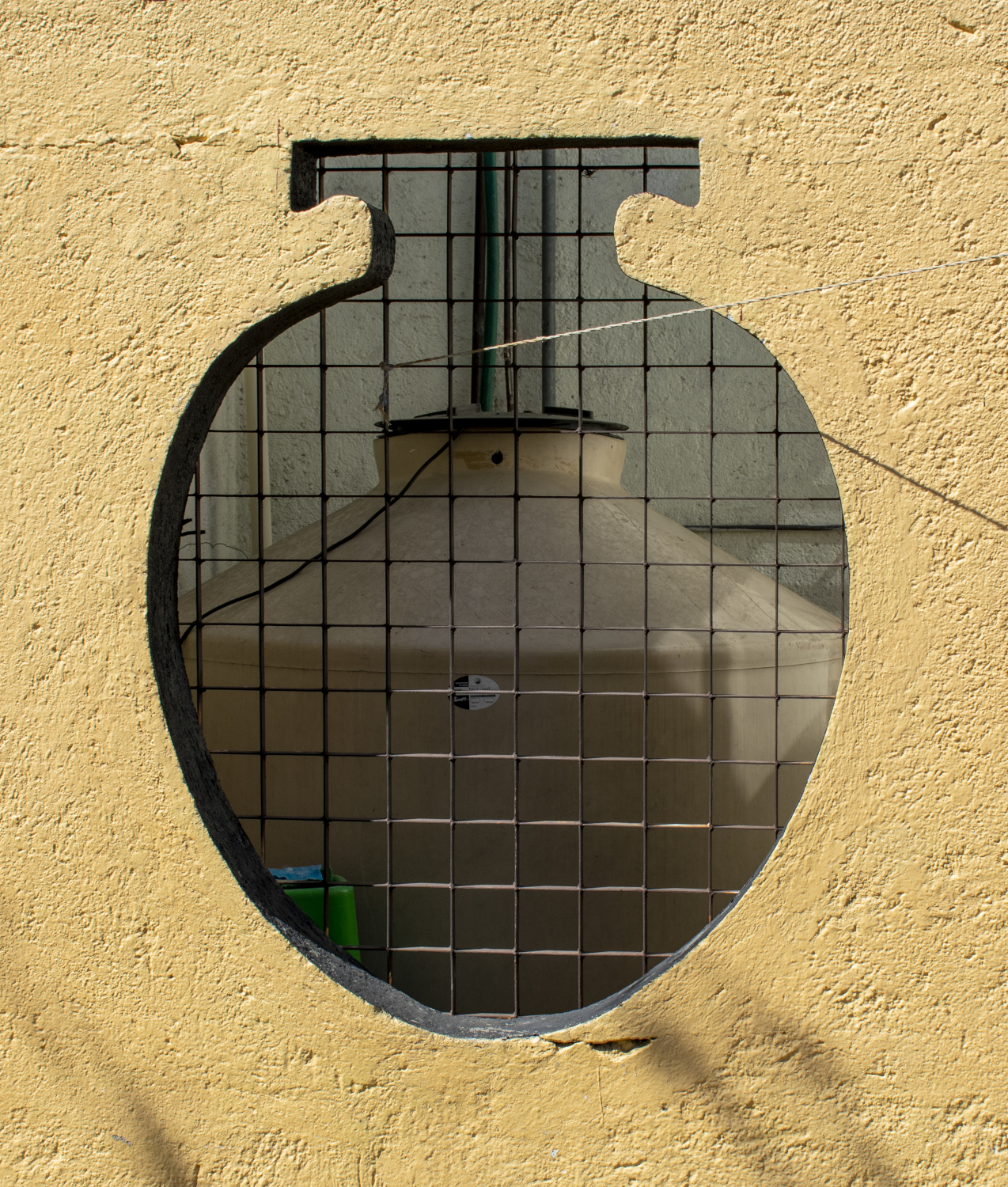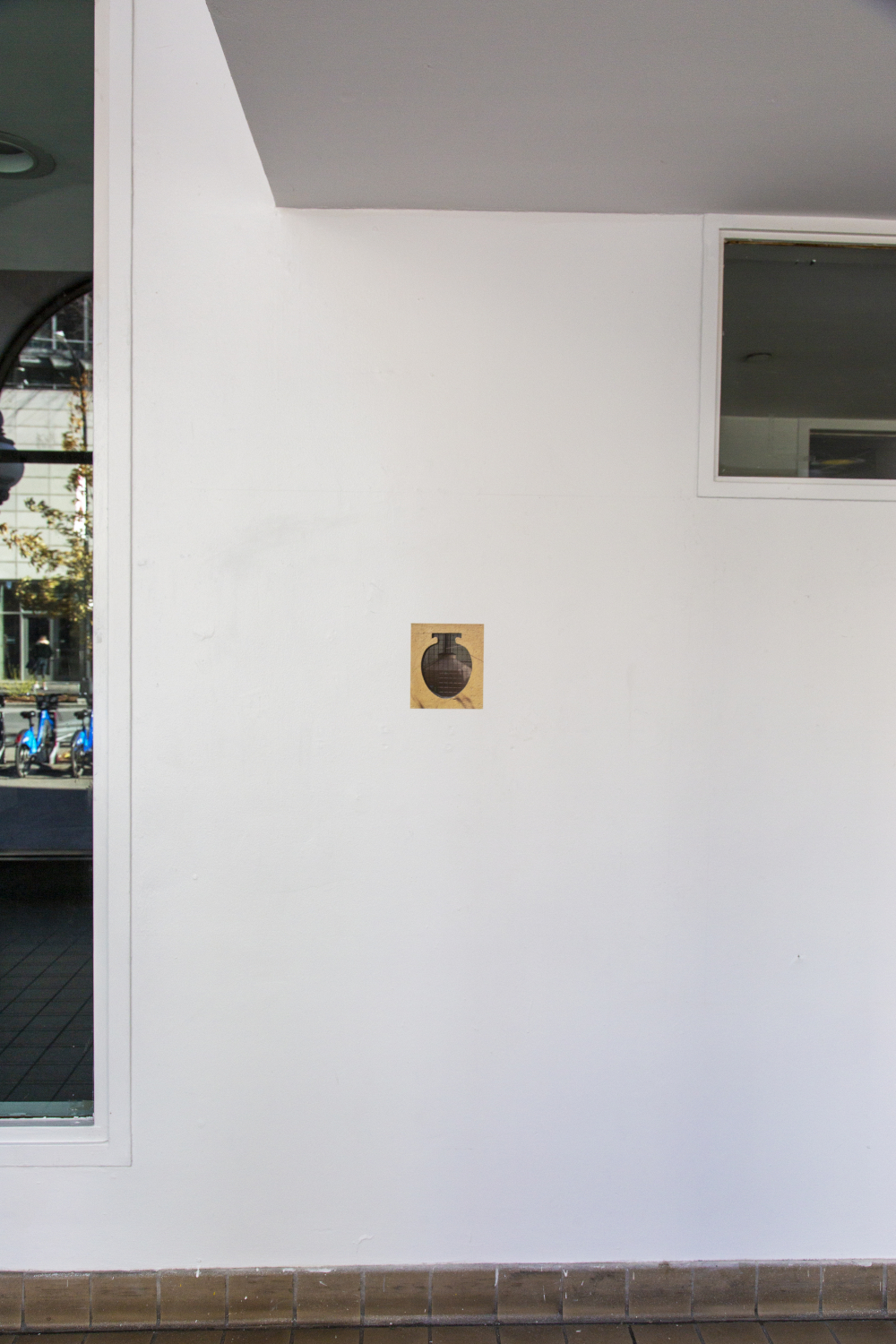To Bear on Both Sides (Barbed Amphora)
Earthenware and Glaze on a structolite, plywood bisected obelisk
A vessel can hold content inside its walls, such as water, and traces of history and culture on its surface. Looking at ancient vessels in museum vitrines, it strikes me how those pots will never hold water again. The potential of their surfaces to act as vessels for history has curtailed their intrinsic function. I began to think of their painted surfaces as signs of their lost ability to hold water.
The etymology of the word “amphora” is roughly “to bear on both sides,” referring to the characteristic handles on either side of the ceramic vase. Amphorae were the first mass-produced containers—powerful tools to bring in goods from distant corners of empires. Walls, fences, and barbed wire are also psychically and physically borne on both sides.
Barbed wire was invented in the nineteenth century so settlers of the American west could quickly demarcate property. The barbed wire fences, baring its sharp barbs on either side, kept cattle in and Native Americans out. Barbed wire—or the devil's rope, as Native Americans called it—was sent to the U.S.-Mexico border as surplus from the trench warfare of WWI.
After the Mexican-American War, when the U.S. took more than half of Mexico’s territory, the U.S. erected 276 obelisk monuments alongside the new border to mark the newly conquered land. This was a time when the young U.S. appealed to ancient architectural forms to visually project and justify its power. Nowadays, the old monuments are wedged between walls, barbed wire and high-tech surveillance equipment, their symbolic power undercut by the newer, more violent physical enforcers.
The barbed wire amphorae are made by coiling earthenware into the traditional shape and displaying them on bisected obelisks. The barbed wire—while maintaining its violent appearance—is now fragile and delicate, vulnerable to the touch. Akin to those vessels at the Met that can no longer hold water, these surfaces hold symbolic reminders of the pain and violence executed at the territorial margins. The characteristic amphora handles are there but cannot be held—viewers bear the form with their eyes and the reality of the border with their conscience.
Earthenware and washes on structolite, plywood bisected obelisk
Earthenware and washes on structolite, plywood bisected obelisk
Earthenware, grog, steel, hardware, plywood
Earthenware, nylon stockings, metal wire, sun
pdf of handout essay
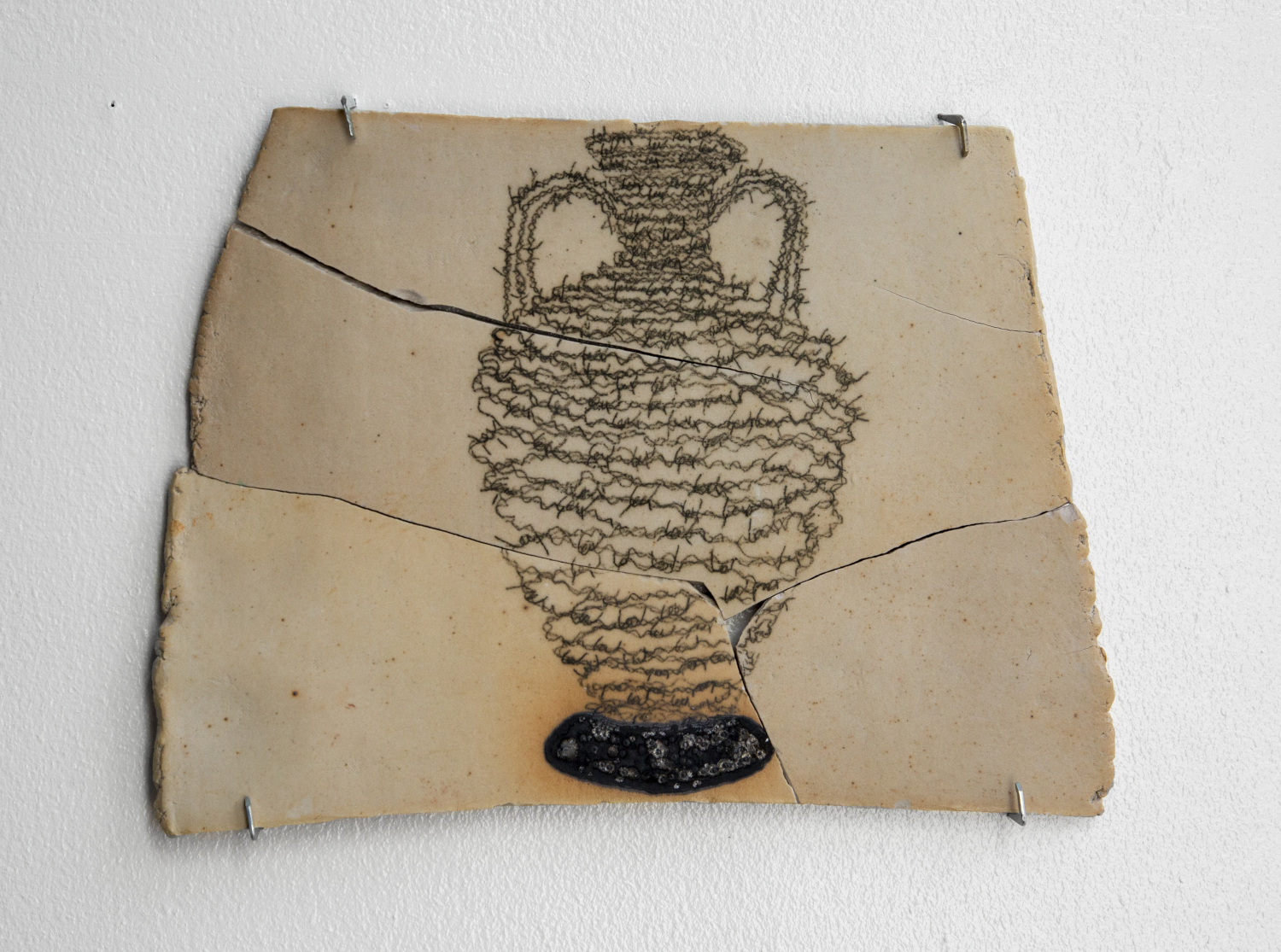
Stoneware, underglaze, superglue
Earthenware, glaze
Stoneware, washes
Bronze, water, developing tray
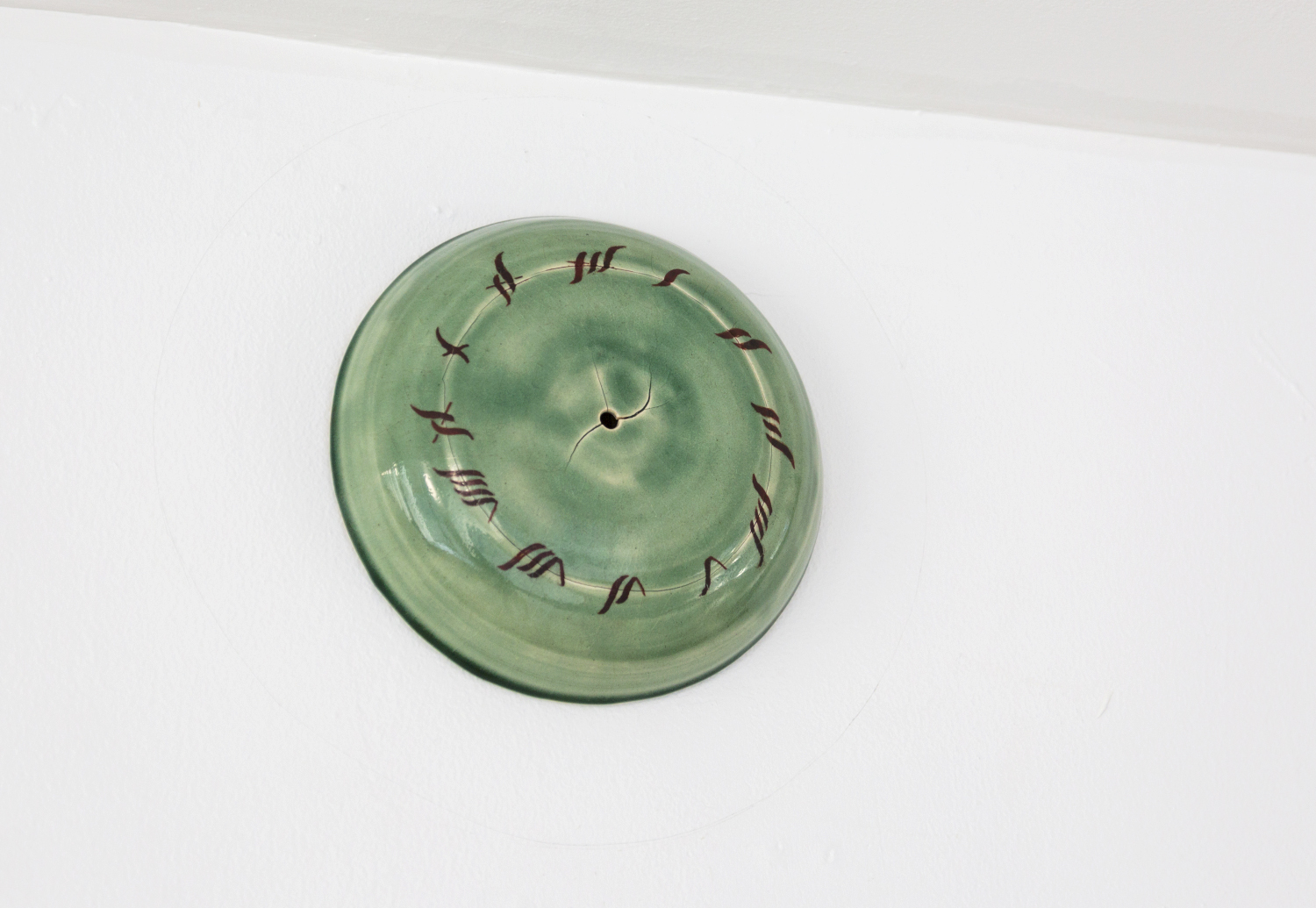
Stoneware, glaze, washes

Pen on handmade paper
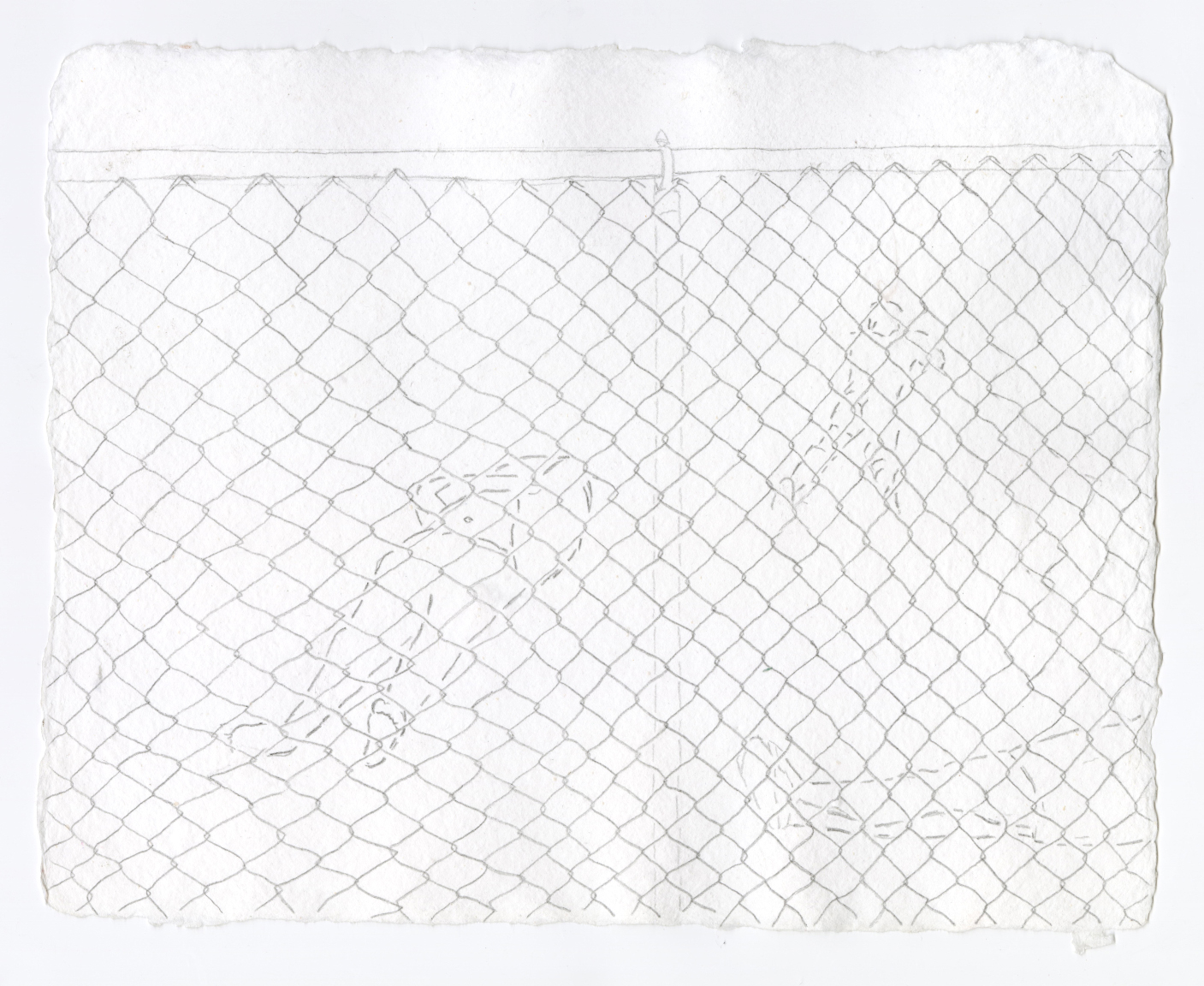
Pencil on handmade paper
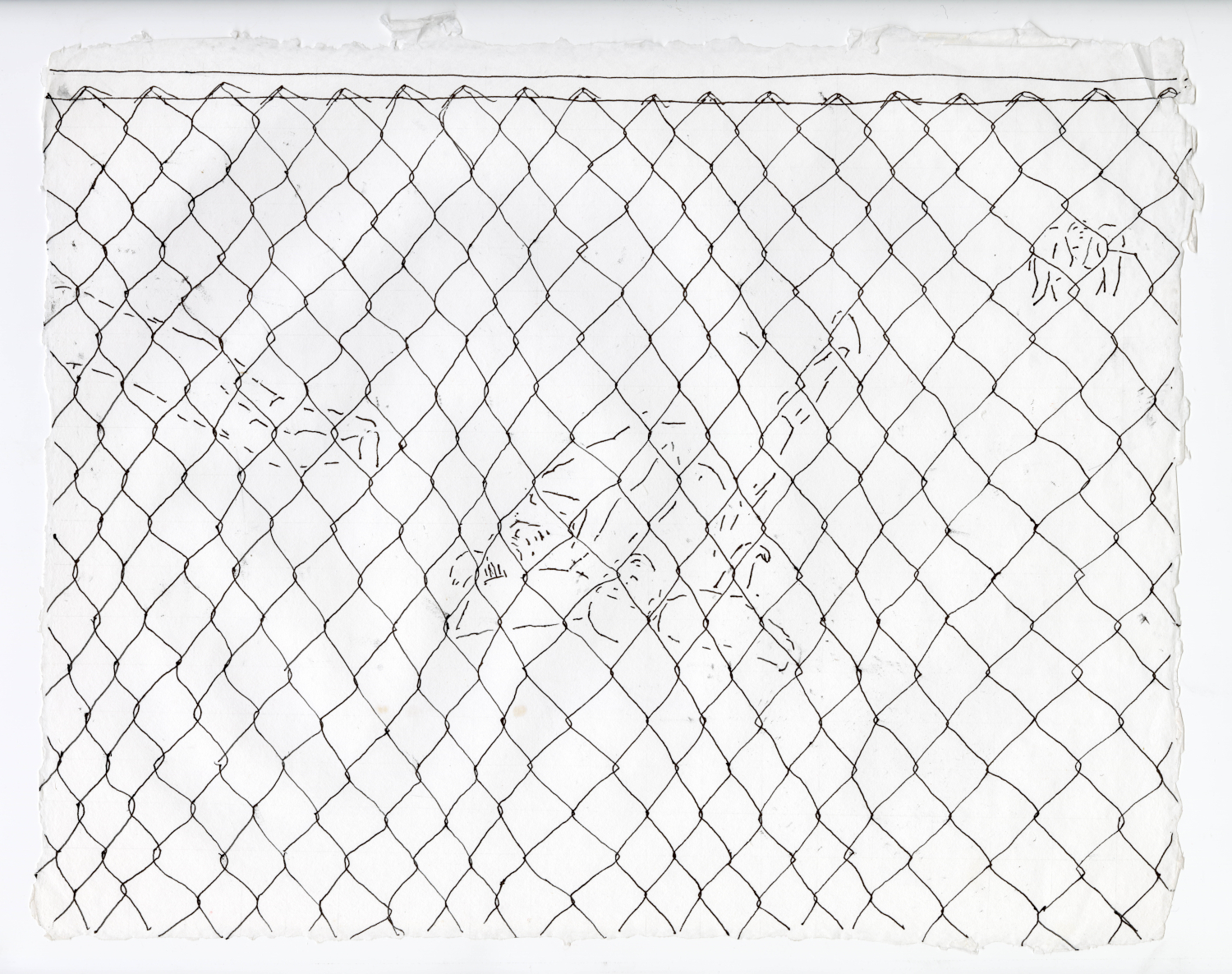
Pen on handmade paper
Pen on handmade paper
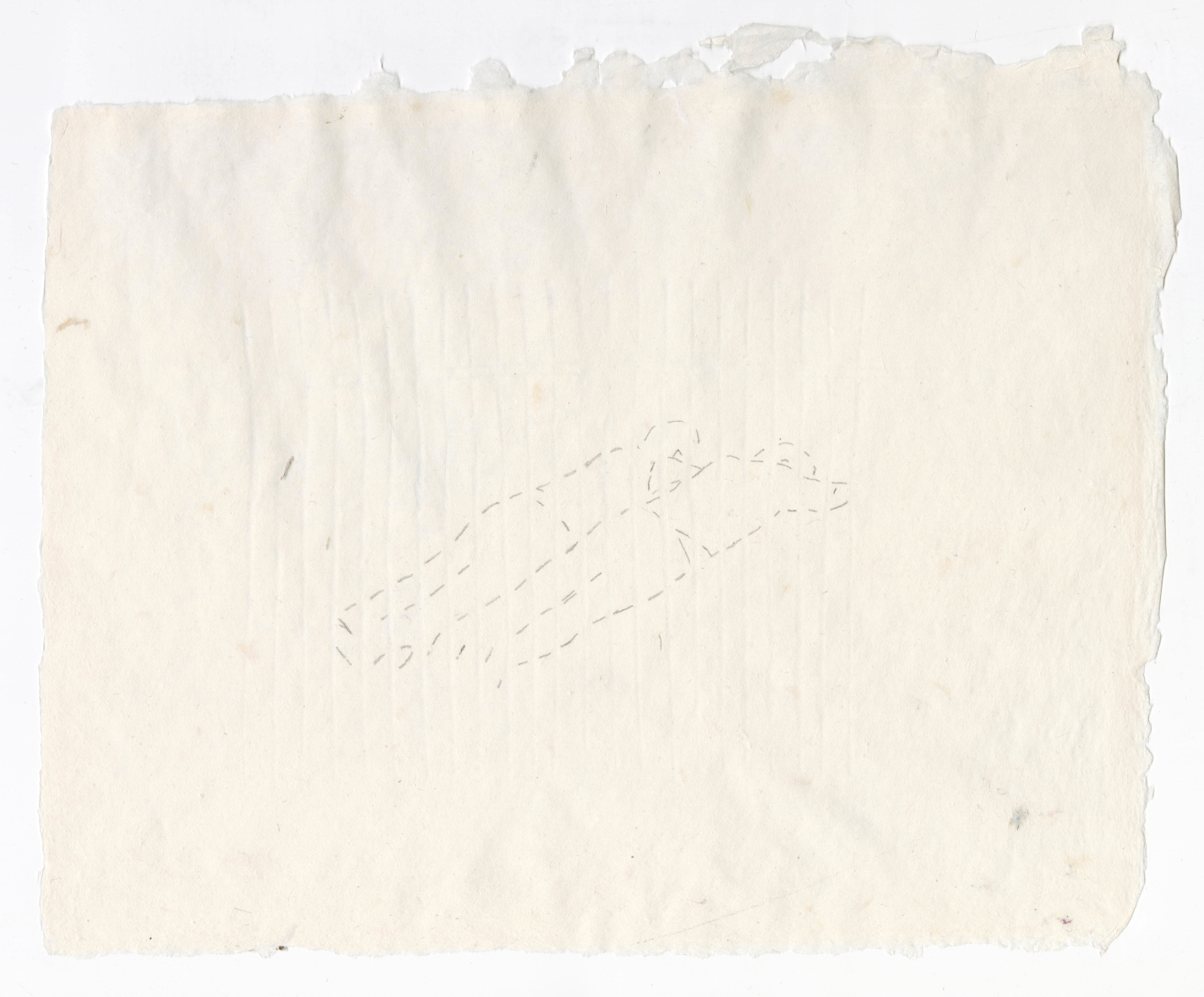
Pencil on handmade paper with watermark
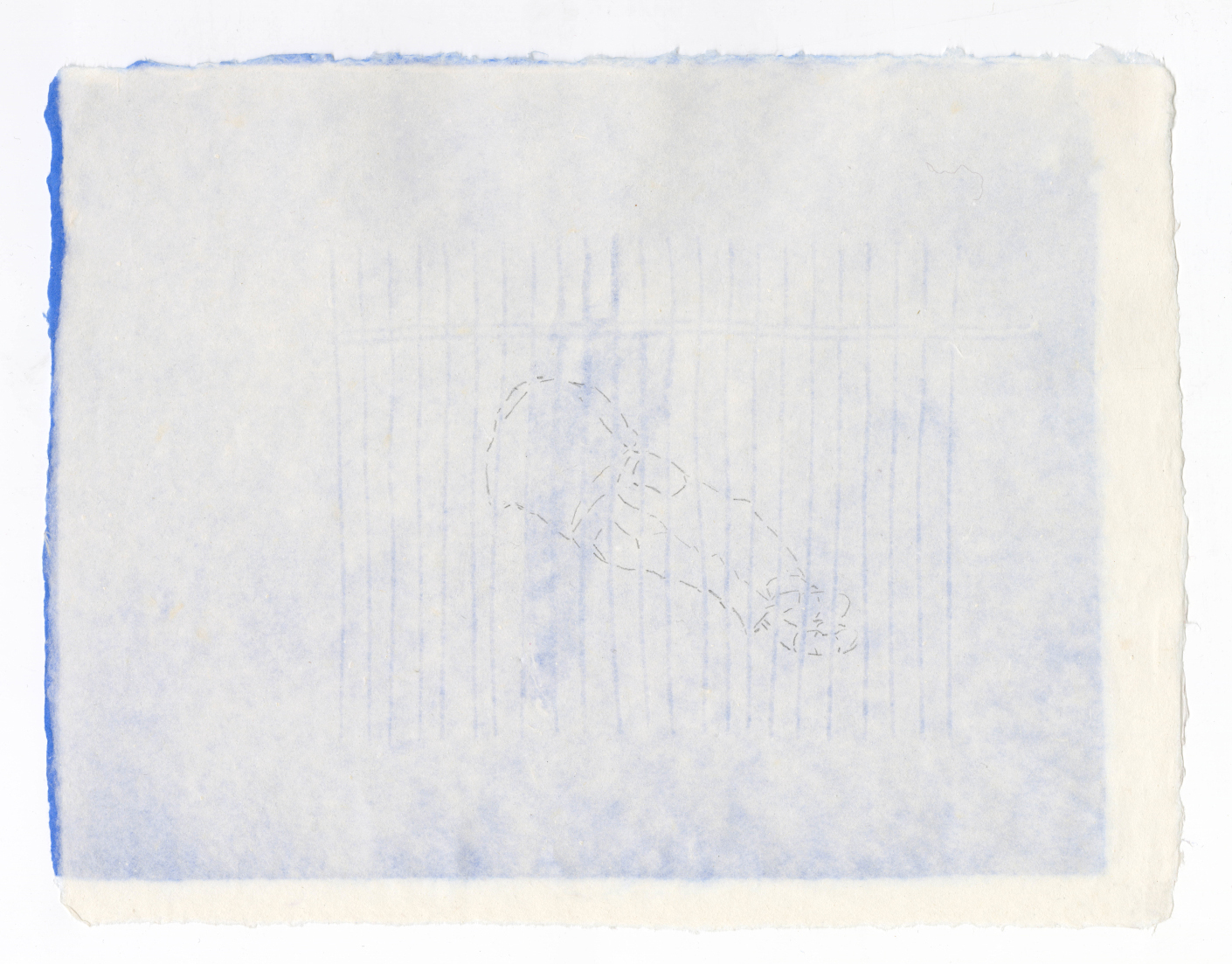
Pencil on handmade paper with watermark
pdf of handout
Two transparent digital prints attached to opposite sides of a window
Digital Print
Thank you, to everyone who helped me put this show together
.jpg)
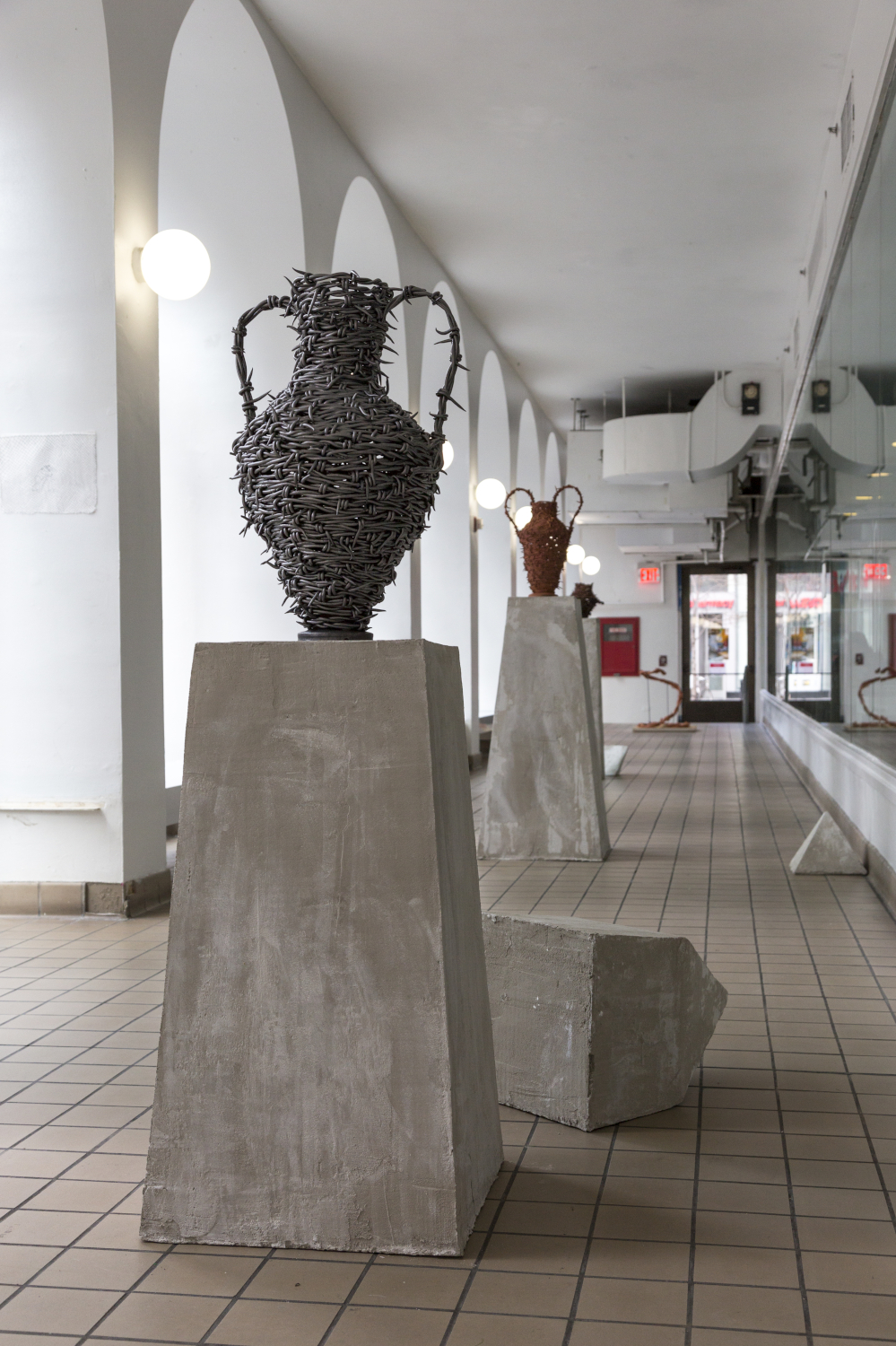
.jpg)
.jpg)
2.jpg)
3.jpg)
